The last time I was in San Francisco, I was in my mid-20s, and I stayed with my sister and her boyfriend at the time, who were living there at the time. My sister took me around to the typical tourist spots. Her boyfriend took me on a drive across the Golden Gate Bridge to Tiburon, up in Marin County. I remember very little of what I saw and I don’t think I got much of a feel for the city.
Although I moved to Seattle 18 years ago and live just 2 hours away by plane, it took me until now to make it back there. I spent the week between Christmas and New Year’s in San Francisco, attempting to get an authentic experience, see some sights, eat some good food, maybe meet some people, and have some fun.
Airbnb didn’t offer anything that ticked all my boxes, so I settled on the Hotel Griffon, on the Embarcadero, overlooking the bay. I don’t normally stay at such nice hotels when I travel, but I thought it was worth the splurge for some extra comfort and a good location.
I didn’t write daily blog posts or keep a journal of the trip, but here’s a rundown of the things I did, along with a selection of pictures. More pictures are in my Google Photo Album. If you don’t want to read all about everything I did each day, feel free to just look at the pictures.
Saturday, December 24
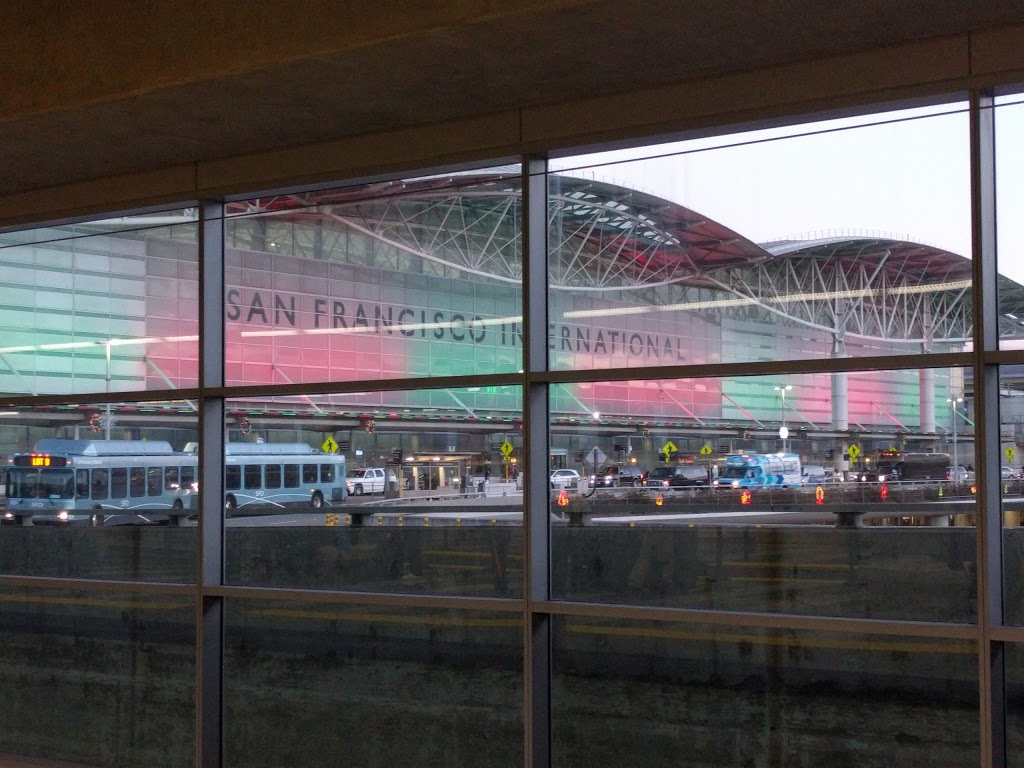
I arrived on Saturday, Christmas eve, and took BART to the Embarcadero. From there it was just a 3‑block walk to my hotel. I arrived around 6pm, got settled in, and went for a walk to find something for dinner. I found myself at the Embarcadero Center, where an ice skating rink was installed for the holiday season, and watched skaters for a bit before I found a little crepe shop that was open, and had dinner there.
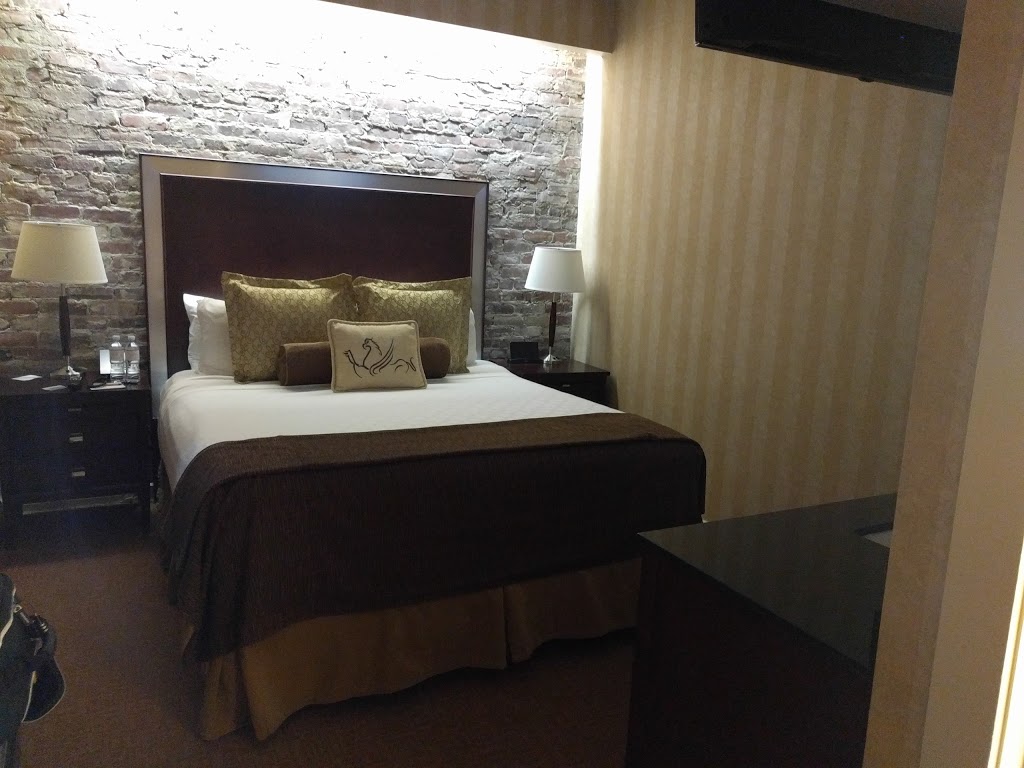
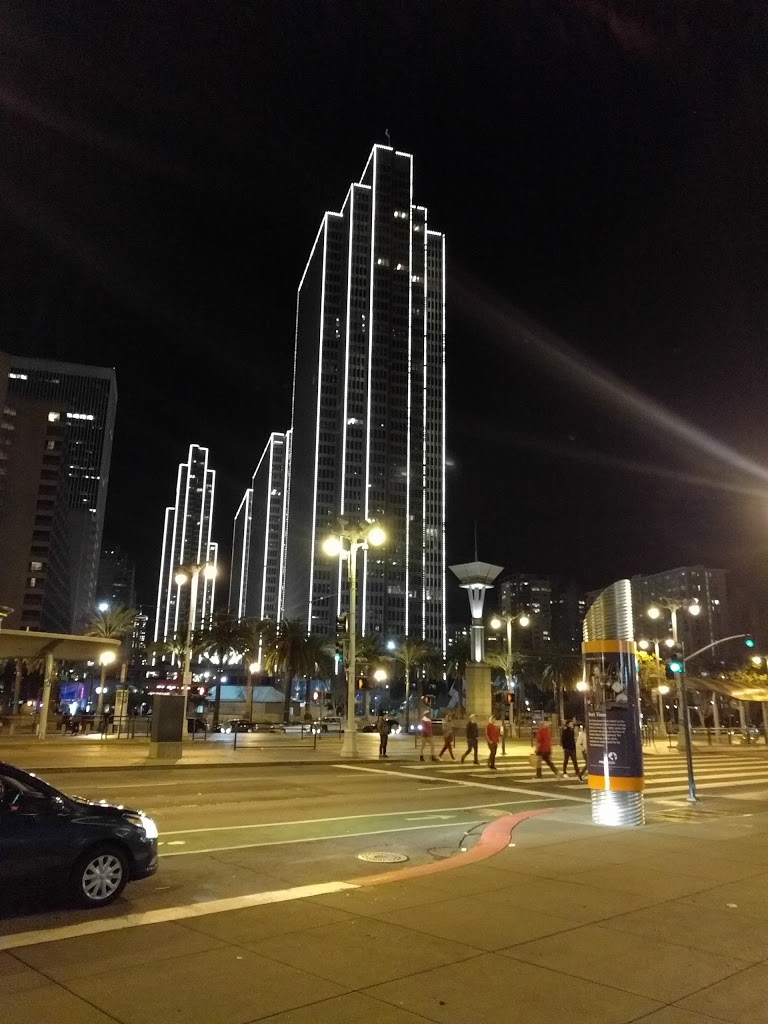
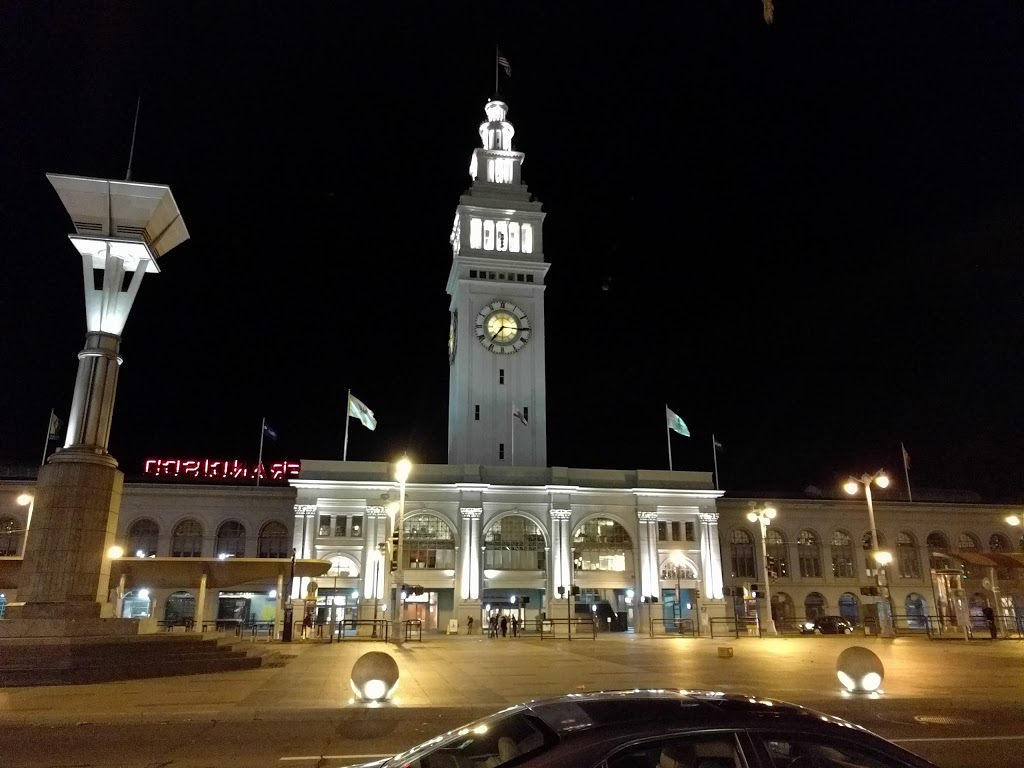
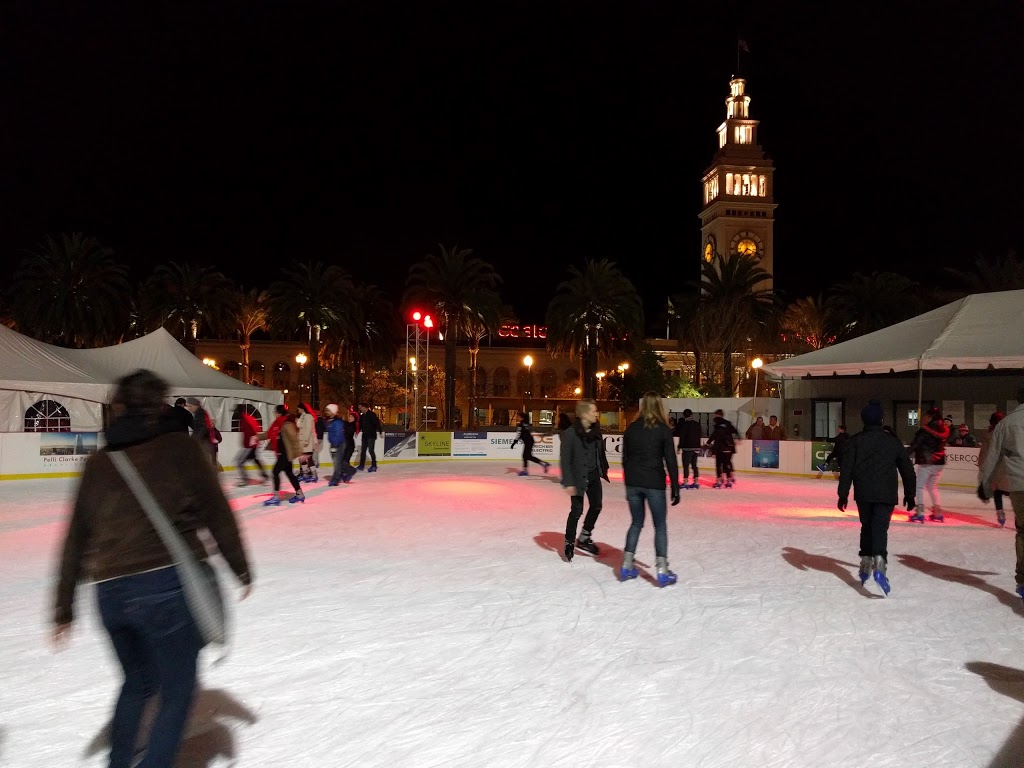

Sunday, December 25
I hadn’t seen my friend Brian in about 20 years, but we’ve kept in touch. He lives in SF with his husband, who was away visiting his family for Christmas. (Brian had to work right up until Christmas eve, so he couldn’t go.)
We made plans ahead of time to cook breakfast at his house in the Castro and then do some wandering around. And we got tickets to Kung Pao Kosher Comedy for that evening.
After breakfast (French toast and bacon and Bloody Marys), we walked around the Castro and up to Corona Heights, then to Dolores Park, and then back to Brian’s for a bit of a rest before the show.
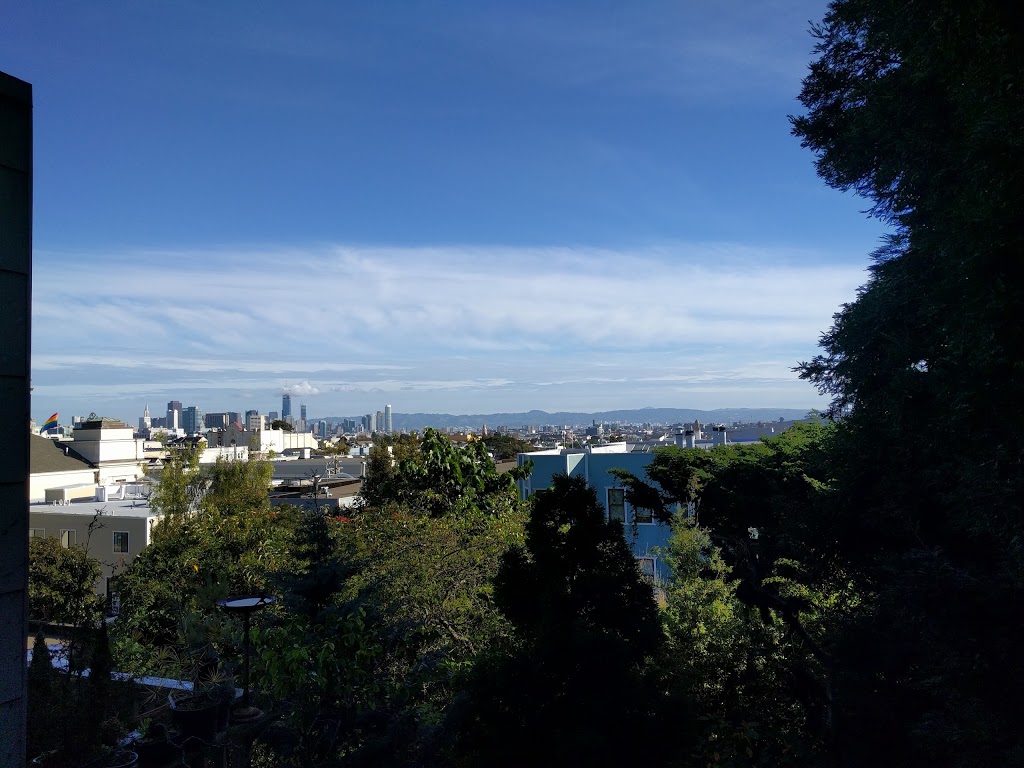

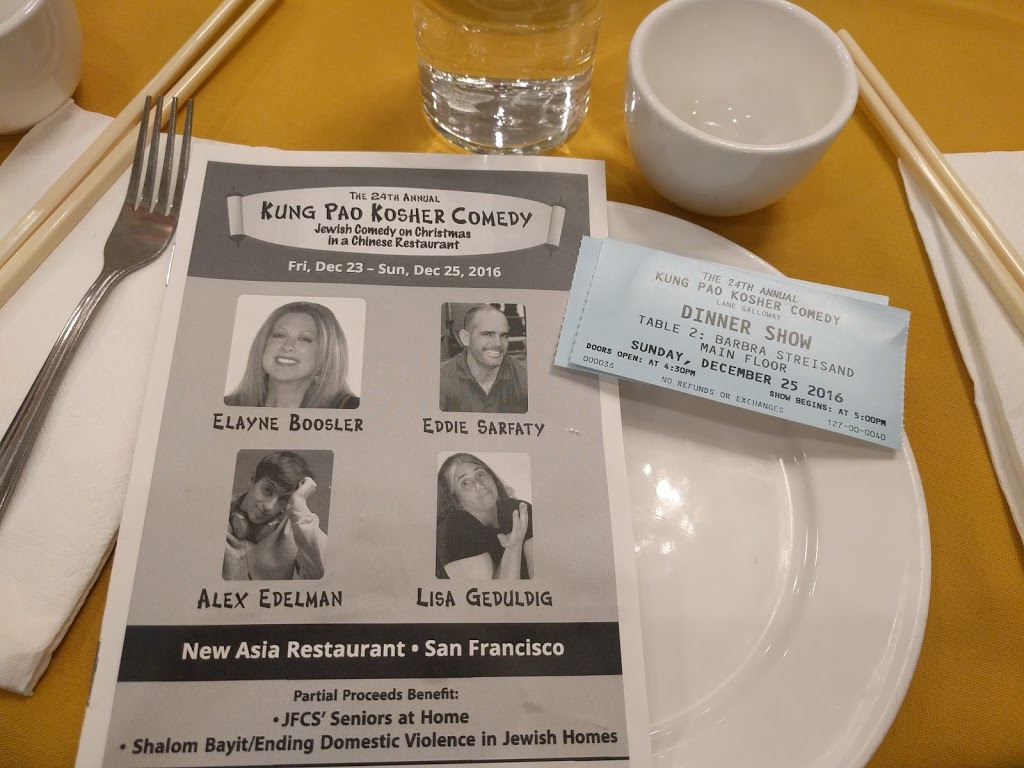
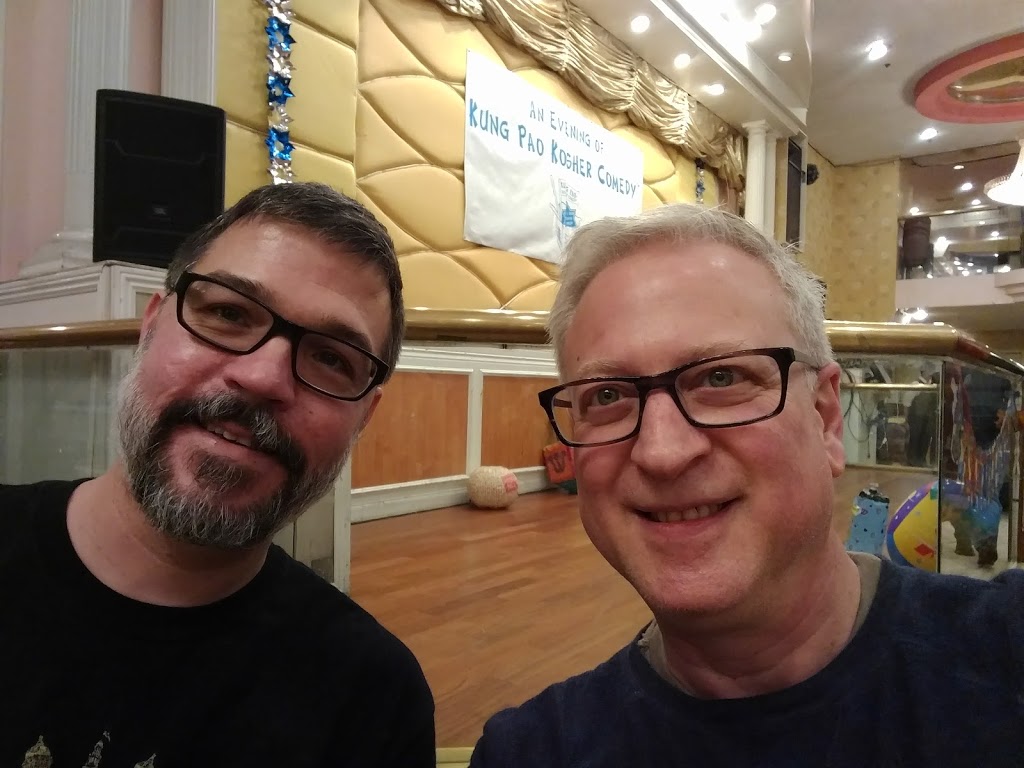
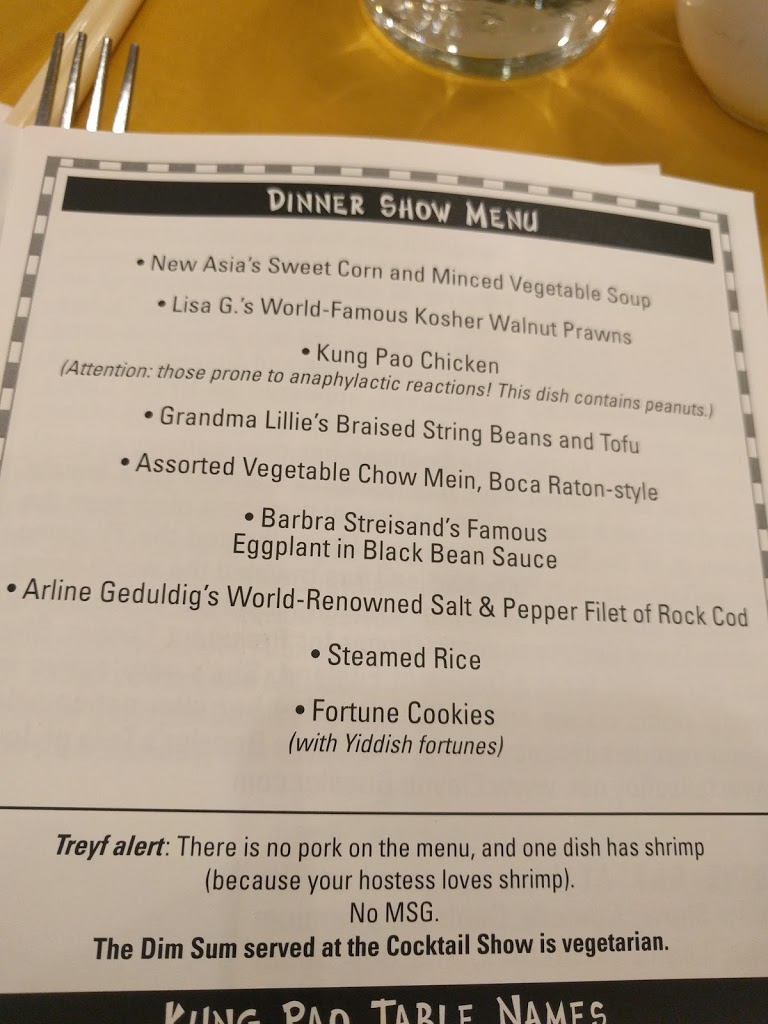
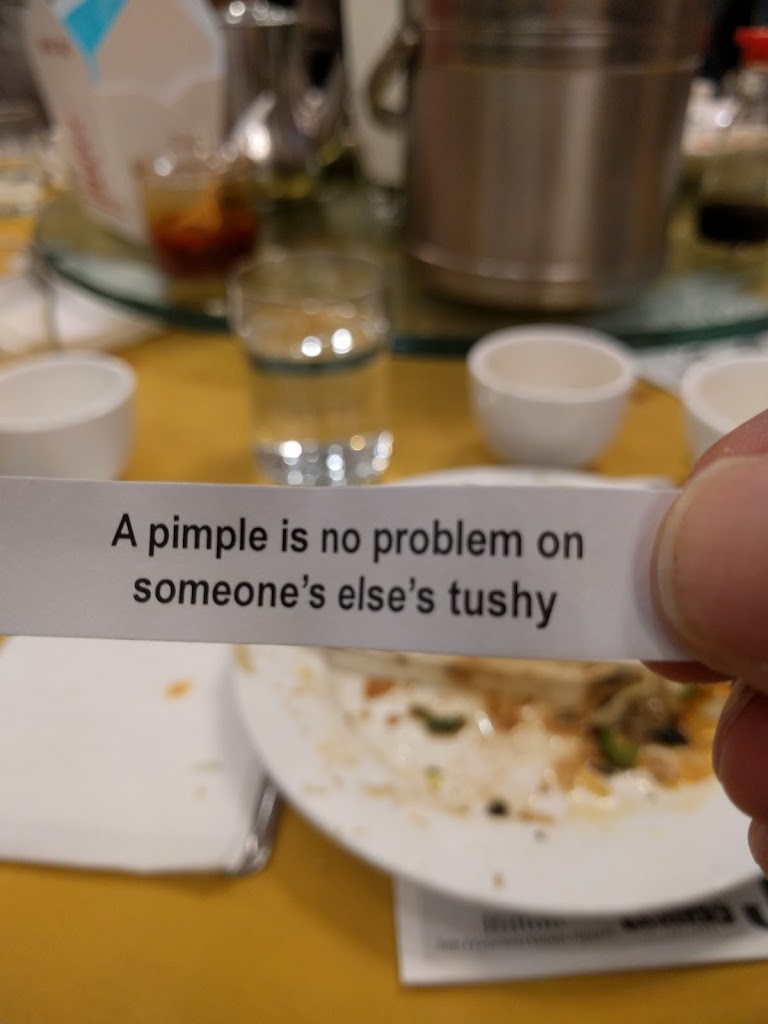
Monday, December 26
I had several things planned for the day on Monday. At 10 am, a one-hour food tour of the Ferry Building, at 12:30 pm, a visit to Alcatraz, and in the evening, a bridge game at Quicktricks, a bridge club in the Castro.
Ferry Building Food Tour
Since I was staying just two blocks from the Ferry Building, I thought it would be smart to begin my visit with a chance to sample some of the offerings. It turned out to be a great idea, because I came back often to the Ferry Building the rest of the week to pick up snacks and treats or have a meal. The tour took us to six or seven of the shops and eateries.


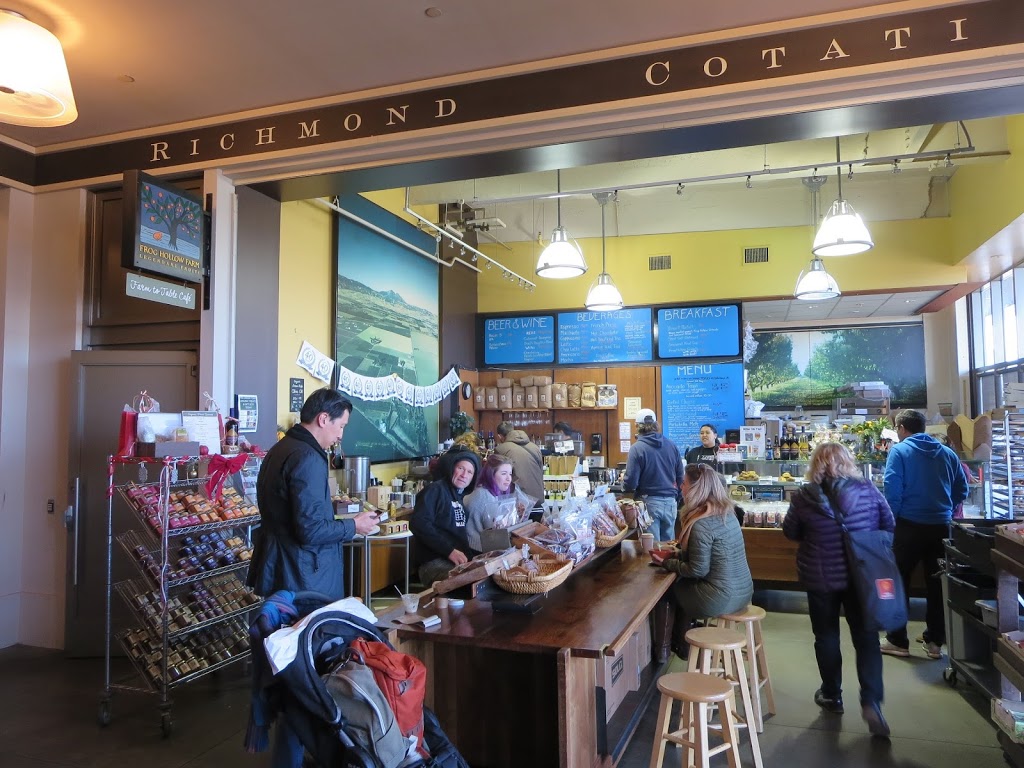
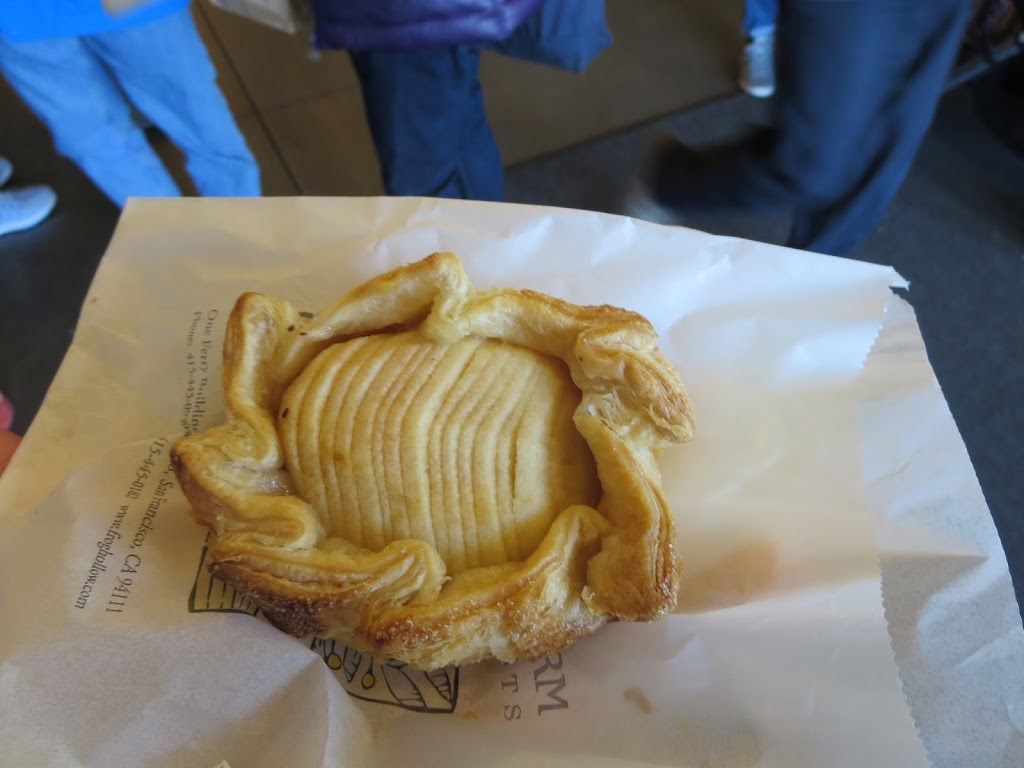
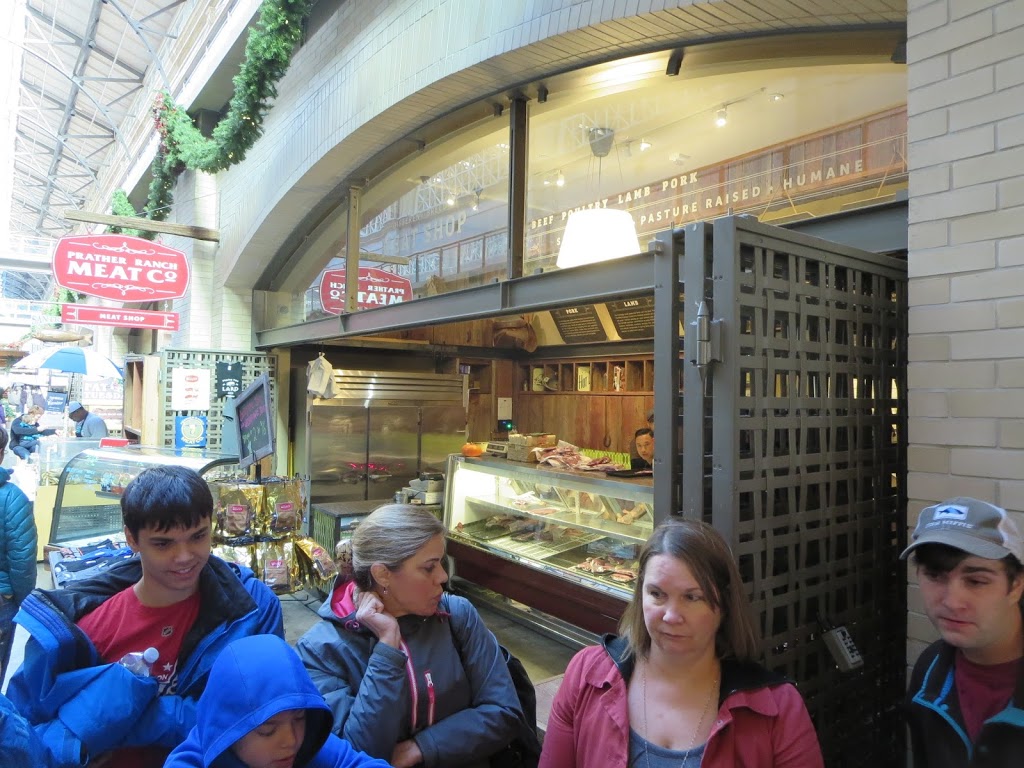
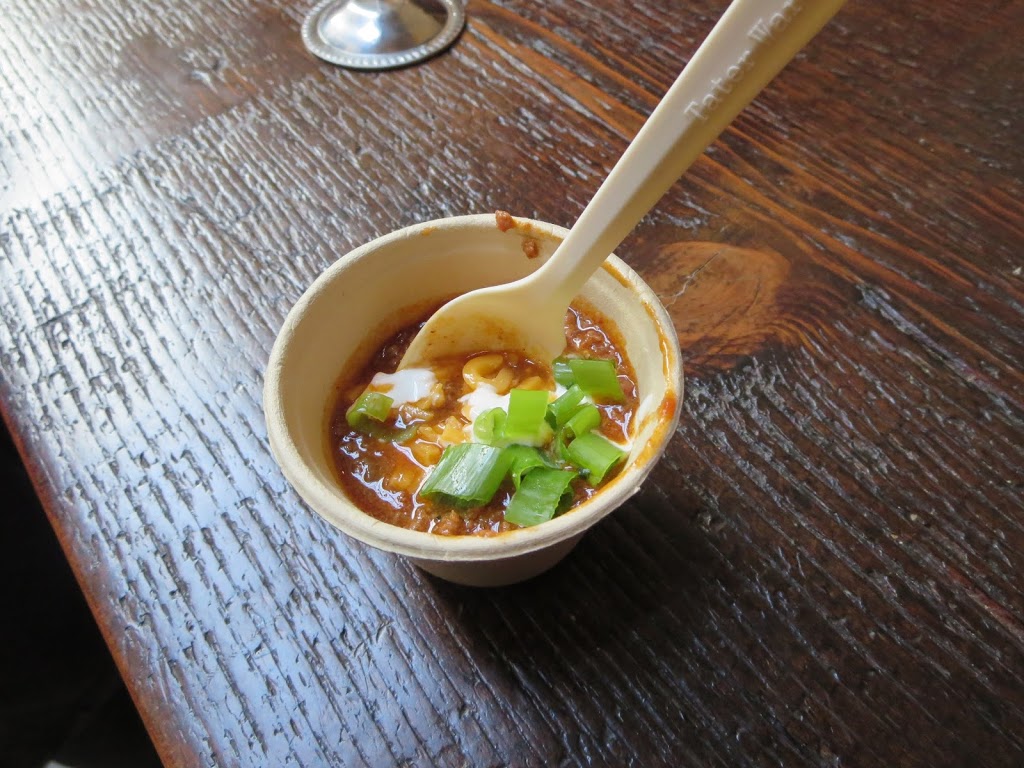
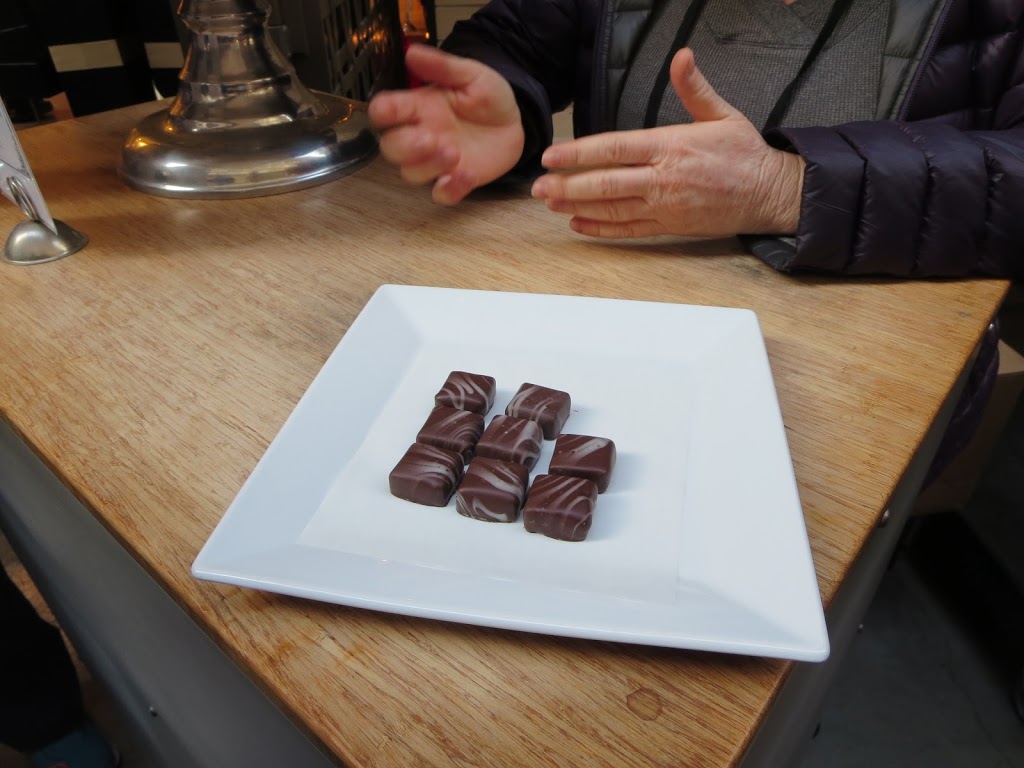
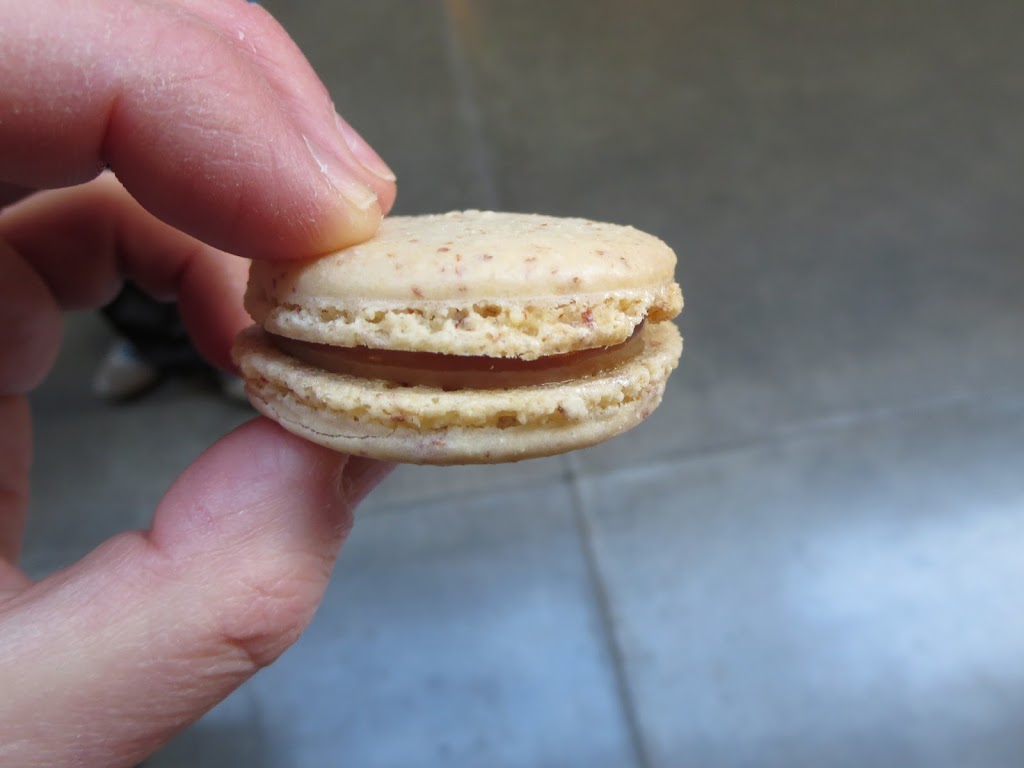
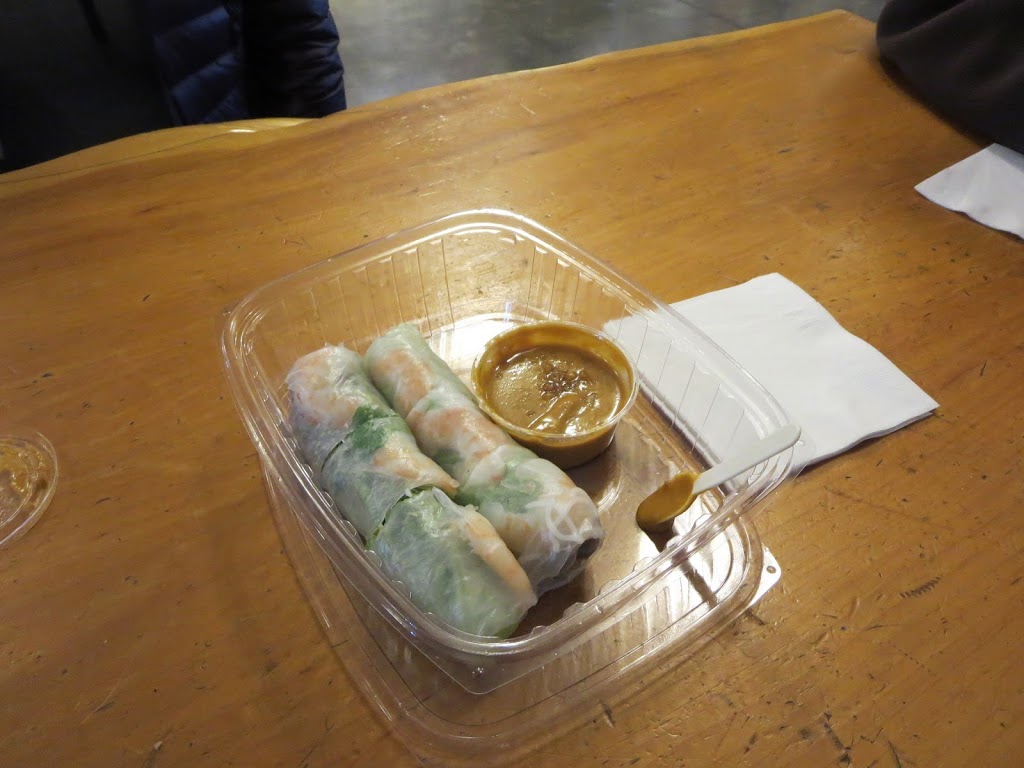
The Ferry Building
The Ferry Building opened in 1898 and was the only way for people to travel between San Francisco and the areas across the bay. It survived the 1906 earthquake with minimal damage. Prior to the construction of the Golden Gate Bridge and Bay Bridge in the 1930s, the Ferry Building was the second busiest transportation terminal in the world after London’s Charing Cross Station. Ferry traffic was greatly reduced after the bridges were built, and the building was the victim of renovations that destroyed the grandeur of its public spaces.
In the 1950s, the elevated Embarcadero Freeway was built and passed right in front of the Ferry Building, largely cutting off public access to the waterfront. When the freeway was damaged in the 1989 Loma Prieta earthquake, the city decided to replace it with a ground-level boulevard, and then the Ferry Building was restored and converted into a marketplace. It opened in 2003. In addition to the market and restaurants, it again serves as a ferry terminal for service to the East Bay, Angel Island, and Marin County.

Alcatraz
At the conclusion of the food tour, I made my way north along the Embarcadero to Pier 33 for my 12:30 sailing to Alcatraz. I spent a couple of hours at Alcatraz, including an excellent audio tour of the prison and a stroll around the grounds.
Alcatraz Island was named by a Spanish explorer, Juan Manuel de Ayala, who charted it in 1775 and called it “La Isla de los Alcatraces” (the island of the pelicans). It was first developed as a military fort during the 1850s. During the Civil War, POWs were housed on Alcatraz, and it served as a military prison until 1933, when it was acquired by the US Justice Department. It became a federal prison in 1934. The prison closed in 1963. In 1969 the island was occupied by a group of native Americans; the occupation lasted nearly two years. In 1972 the island became a national recreation area; in 1986 it was designated as a National Historic Landmark.
Wikipedia has an excellent article on the Alcatraz Federal Penitentiary.




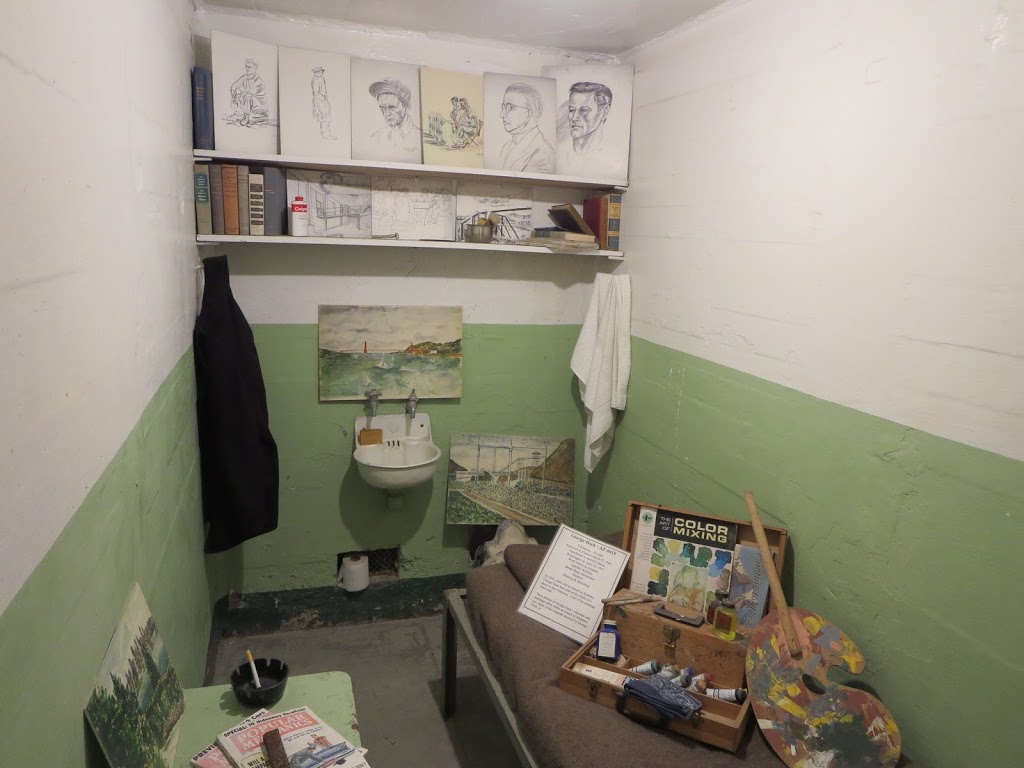
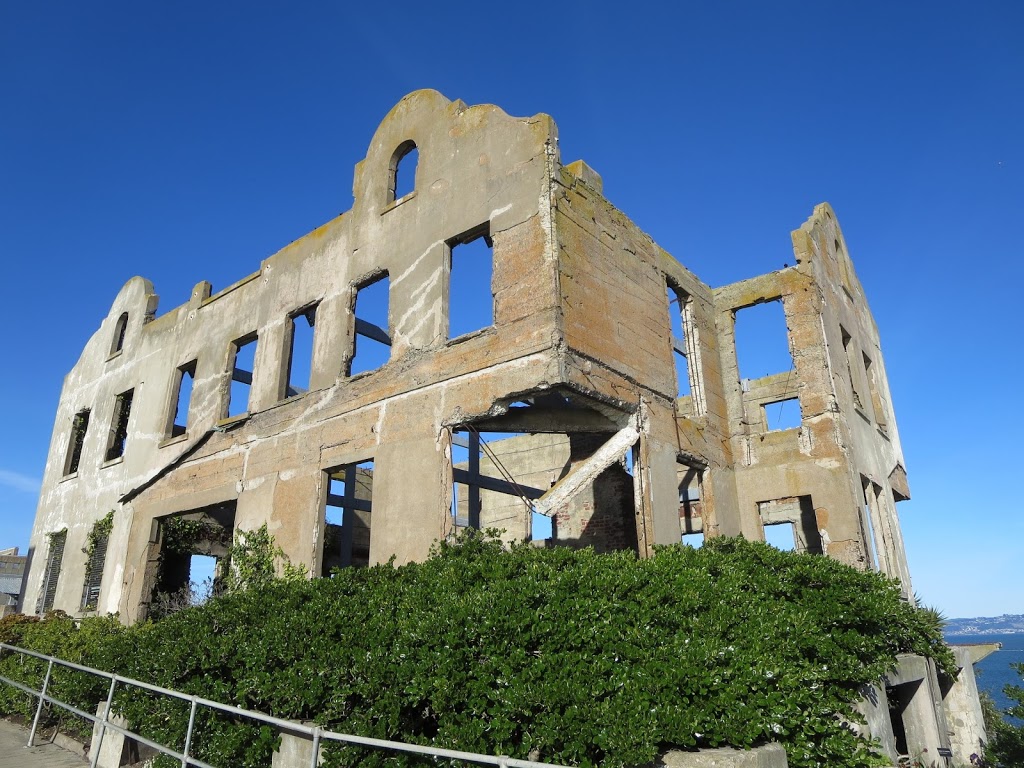
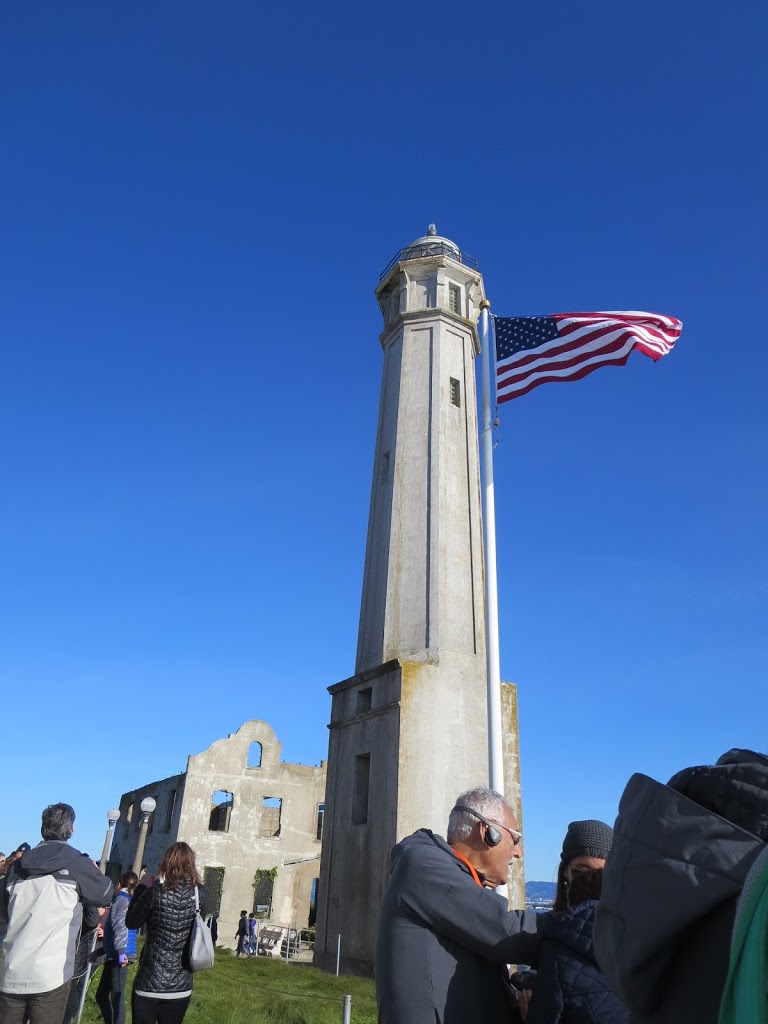
After I got back from Alcatraz, I walked back to my hotel and got in touch with Brian, who agreed to meet me for dinner before my bridge game. We met at Finn Town and had a nice meal before my bridge game.
Bridge in the Castro
The bridge game was at a church just around the corner from where Brian lives, so he walked me there and we made tentative plans to meet up on Tuesday for lunch.
The church, Most Holy Redeemer Catholic Church, as it turns out, would be a site I’d be back to on a walking tour of the Castro the next day. According to the church’s web site,
The parish offers a spiritual home to all: senior citizens and youth; single people and families; those who are straight, gay, lesbian, and transgendered; the healthy and the sick, particularly persons with HIV disease.
The church played a pivotal role in supporting AIDS victims in the community.
The bridge game at Quicktricks was really good. I was paired up with a lovely partner named Sari, and we managed to scratch (coming in first in C) in a very strong field with 12 tables. We decided to schedule another game at a different club on Wednesday night.
Tuesday, December 27
The next morning I got an email from Sari with a rundown and analysis of how we did. I took a little time in the morning to write her a reply, and then she invited me, if I had time that afternoon, to come by and see her art collection. I had no idea what to expect.
After breakfast at Perry’s, the restaurant adjacent to the hotel lobby (my one and only breakfast there; it was not a particularly good spot for breakfast), I made my way back to the Castro for a walking tour. I learned about San Francisco City Guides on Fodor’s travel forum. They are a non-profit group of volunteers, sponsored by the public library, who give walking tours of various neighborhoods and public buildings in the city. They accept donations, but none of the guides are paid, and the donations support the program.
Castro Walking Tour
The Castro walking tour was interesting, informative, and fun. Previously a working-class neighborhood, the Castro started attracting gay residents in the 1940s. Dishonorably discharged from the armed forces during World War II, they landed in San Francisco and stayed there. Following the war and through the 1950s, the exodus of middle class families to suburban areas resulted in the availability of relatively low-cost homes in the neighborhood. The first gay bar in the neighborhood opened in 1963, and in the late 60s, the hippie and free-love and anti-war movements, centering in the Haight-Ashbury neighborhood drove gays away from that area and the Castro really boomed as a gay mecca. In 1973, Harvey Milk opened Castro Camera; in 1978 he was assassinated. The 1980s and 90s were a terrible time for the community, as so many died of AIDS. The tour served as a visual guide through all that history.

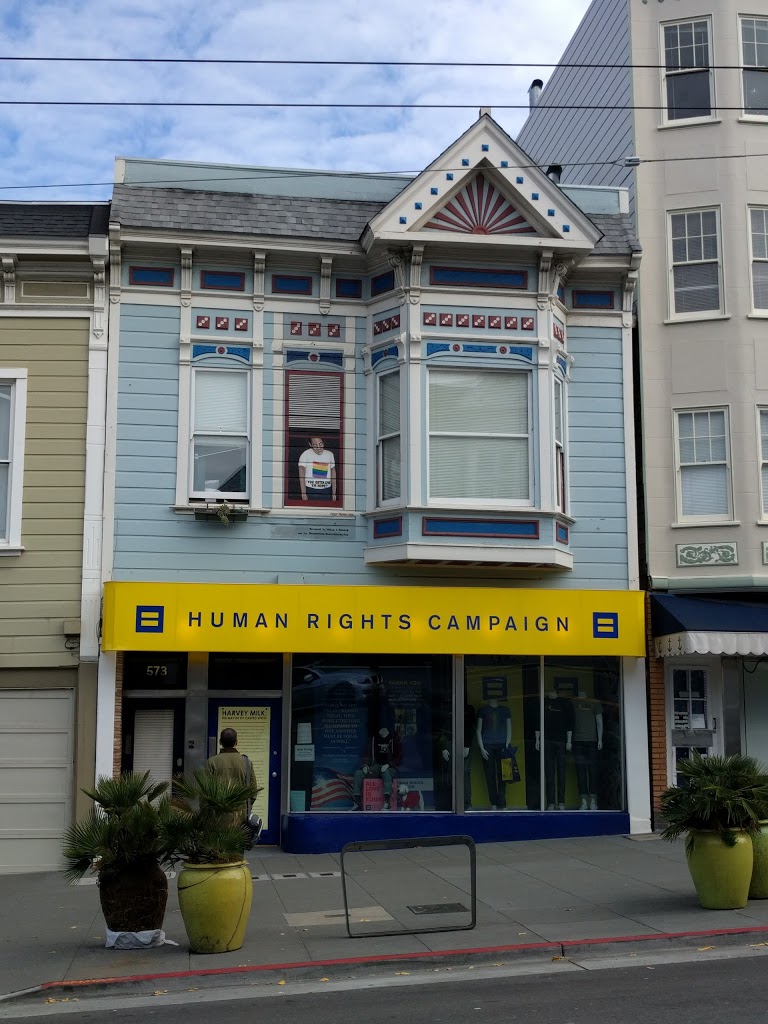
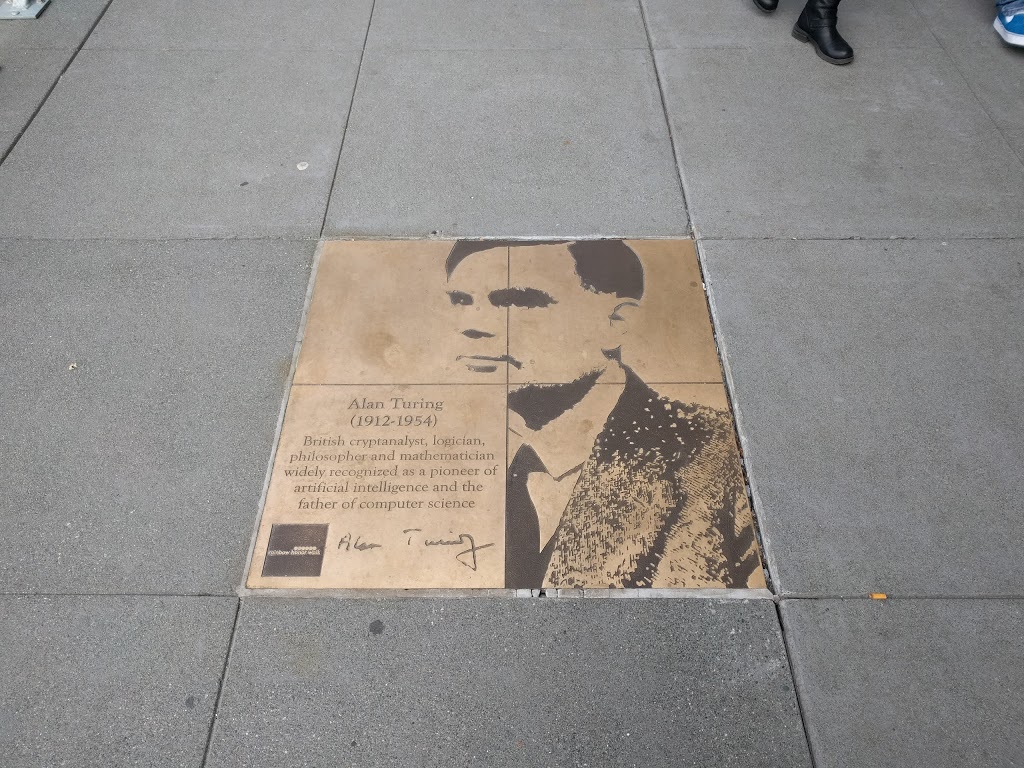
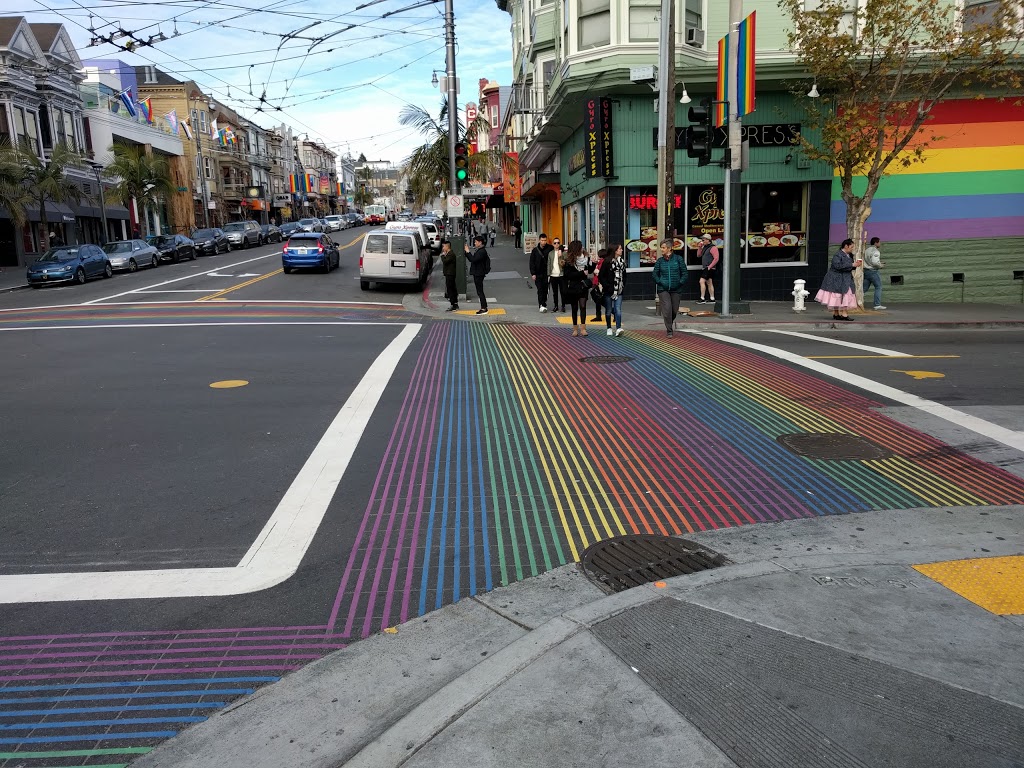
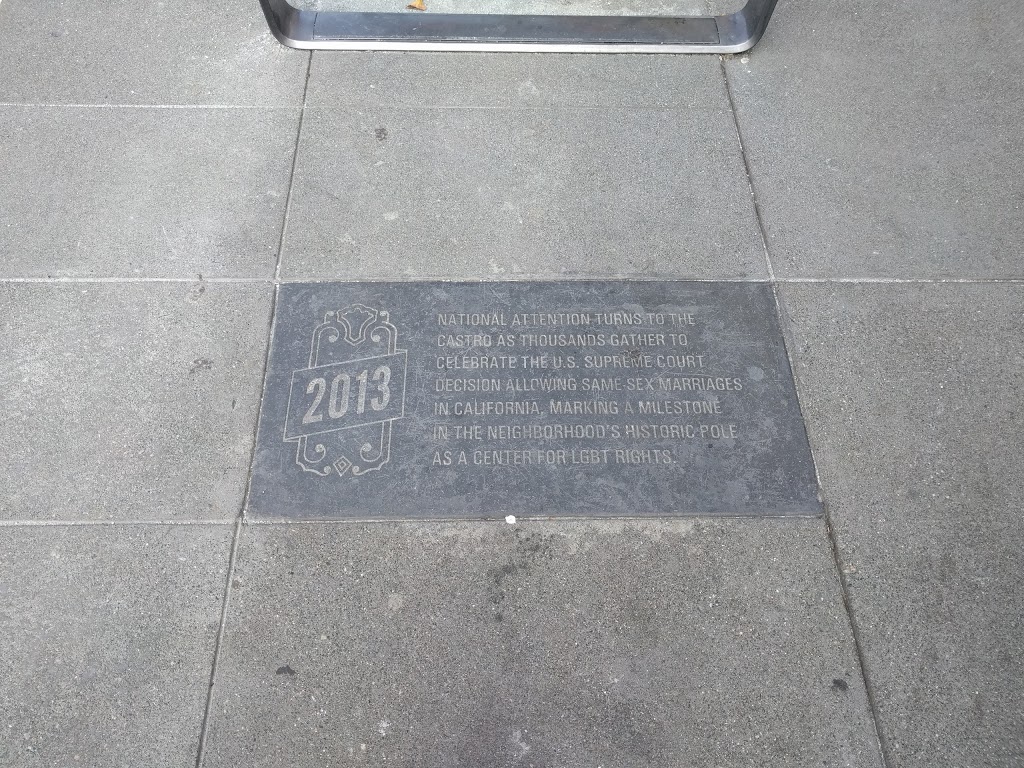
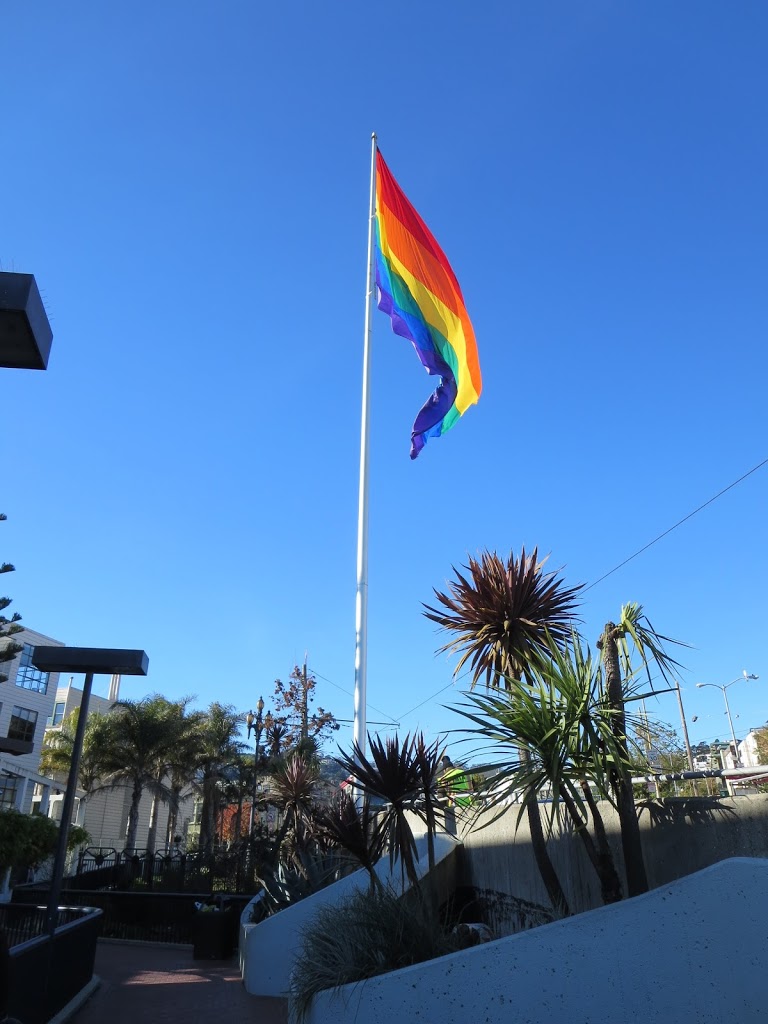
Victorian homes

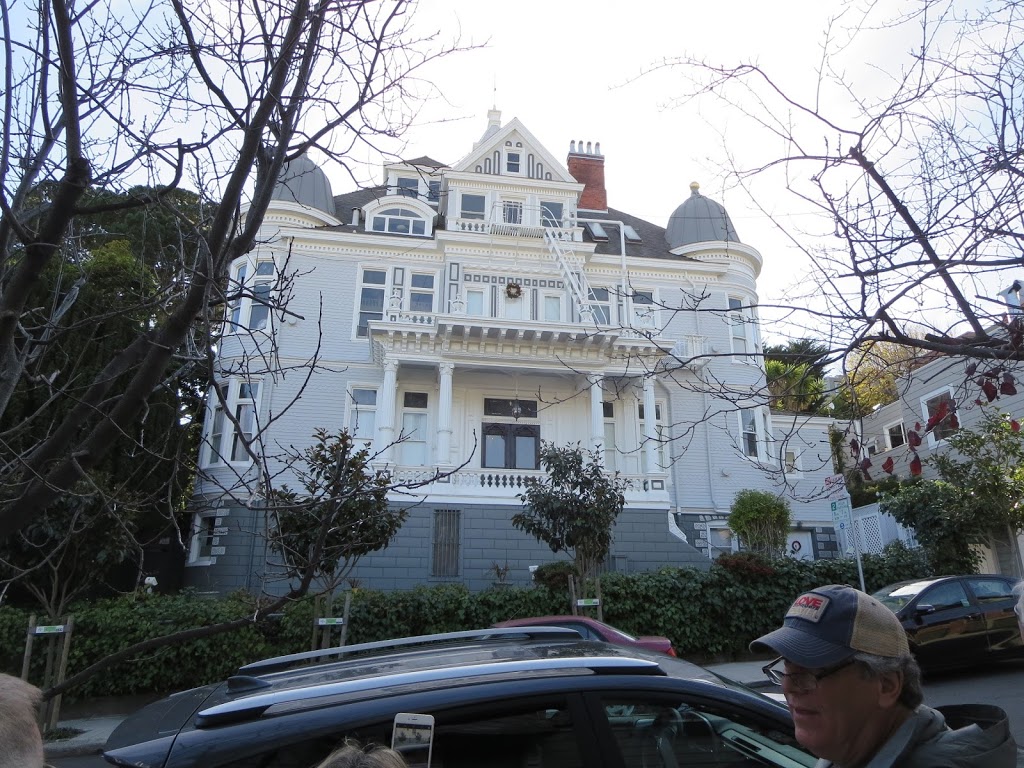
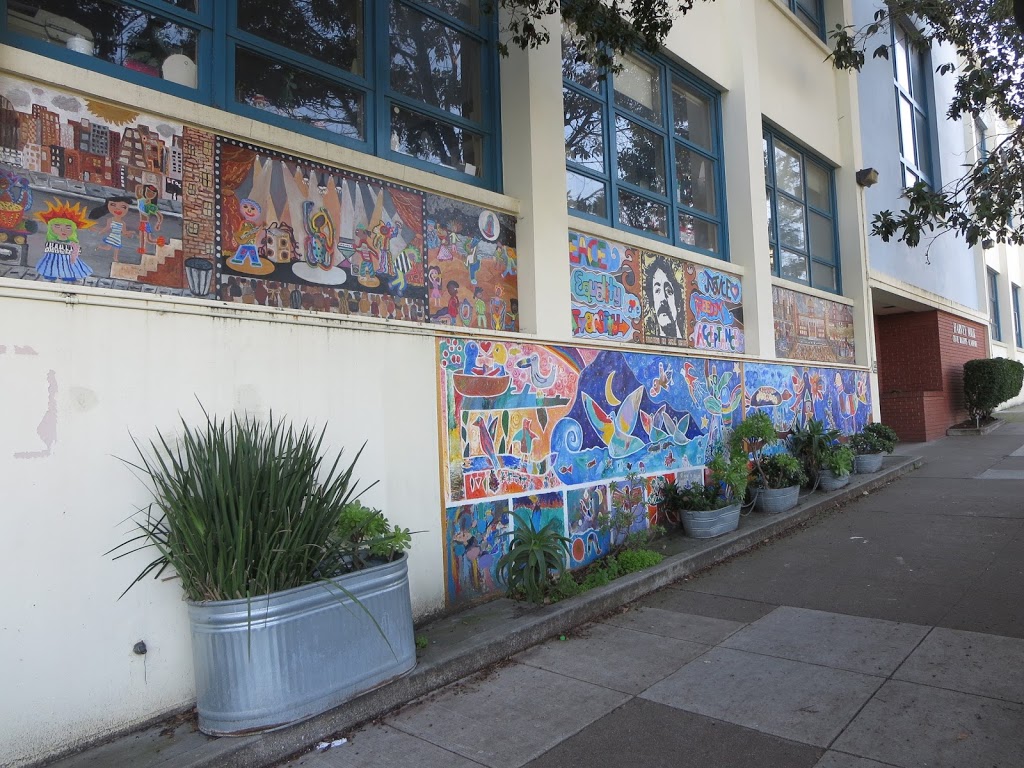
Following the tour Brian and I met for lunch at Harvey’s, and then I got in touch with Sari and she said come on over, so I went to see her art collection.
Mosaics
It turns out she is a ravenous collector of mosaic art. I was blown away by the size and quality and variety of her collection.
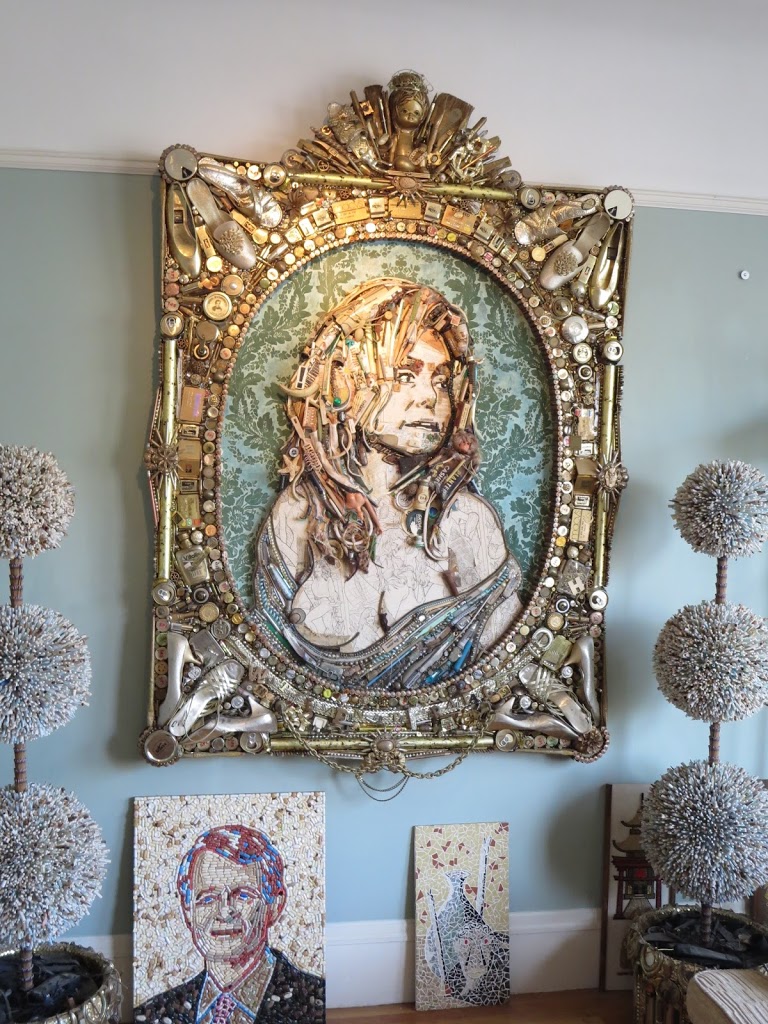


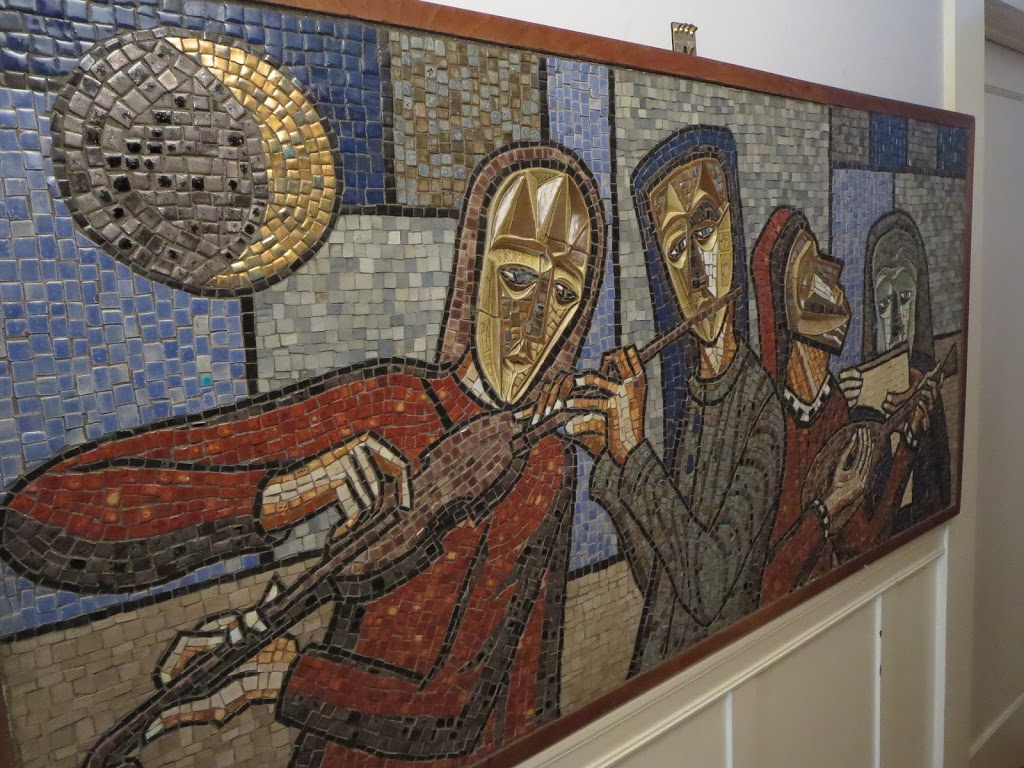
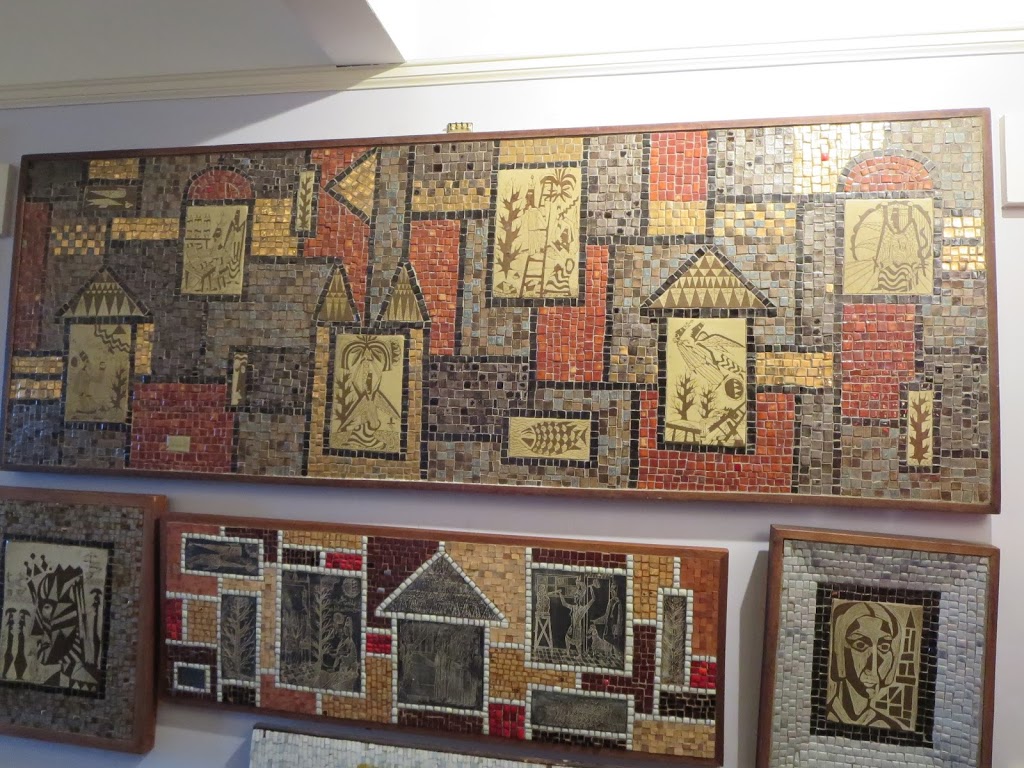
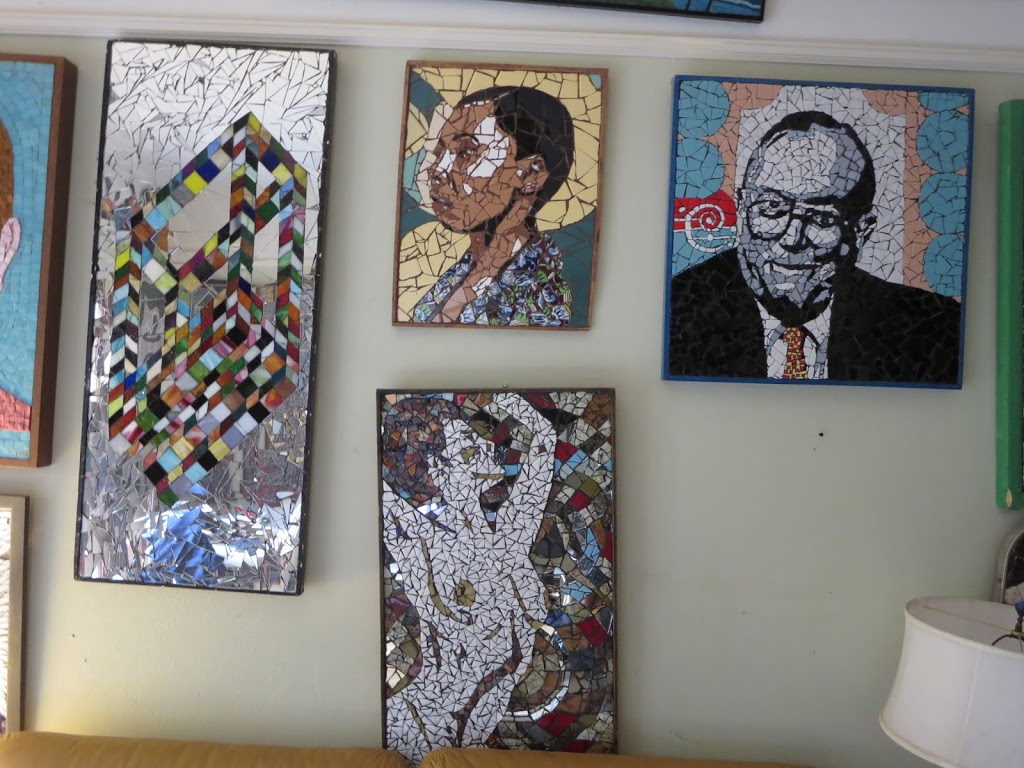

I spent a while visiting with Sari, and then I walked to the Mission District and explored on my own.
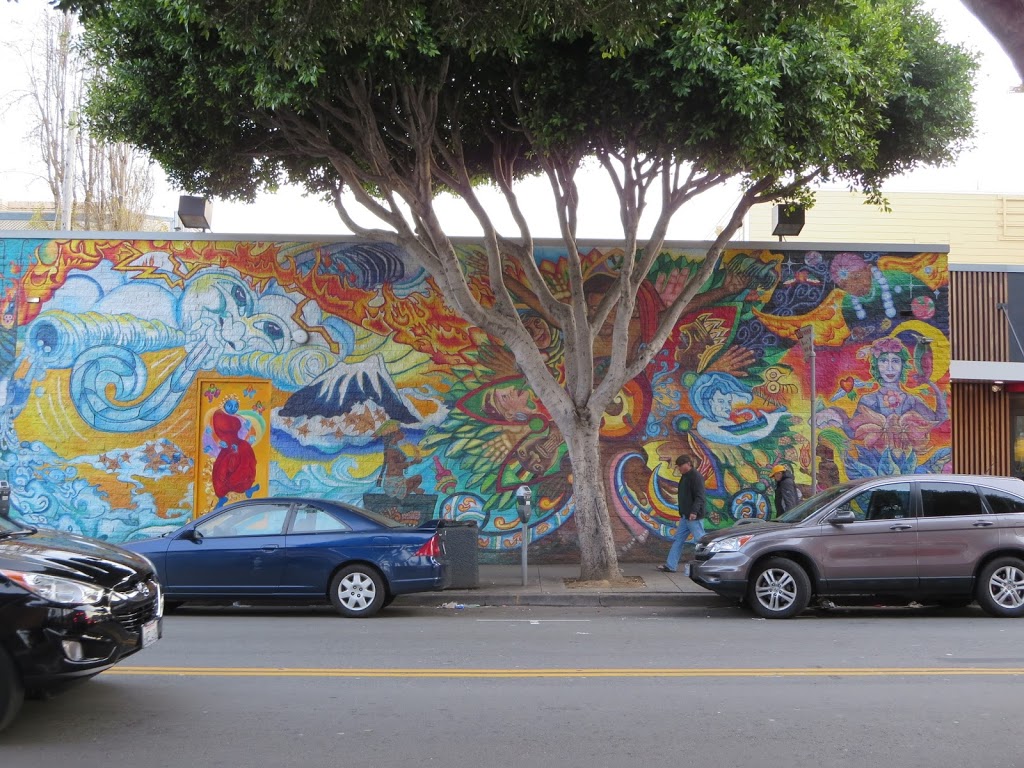

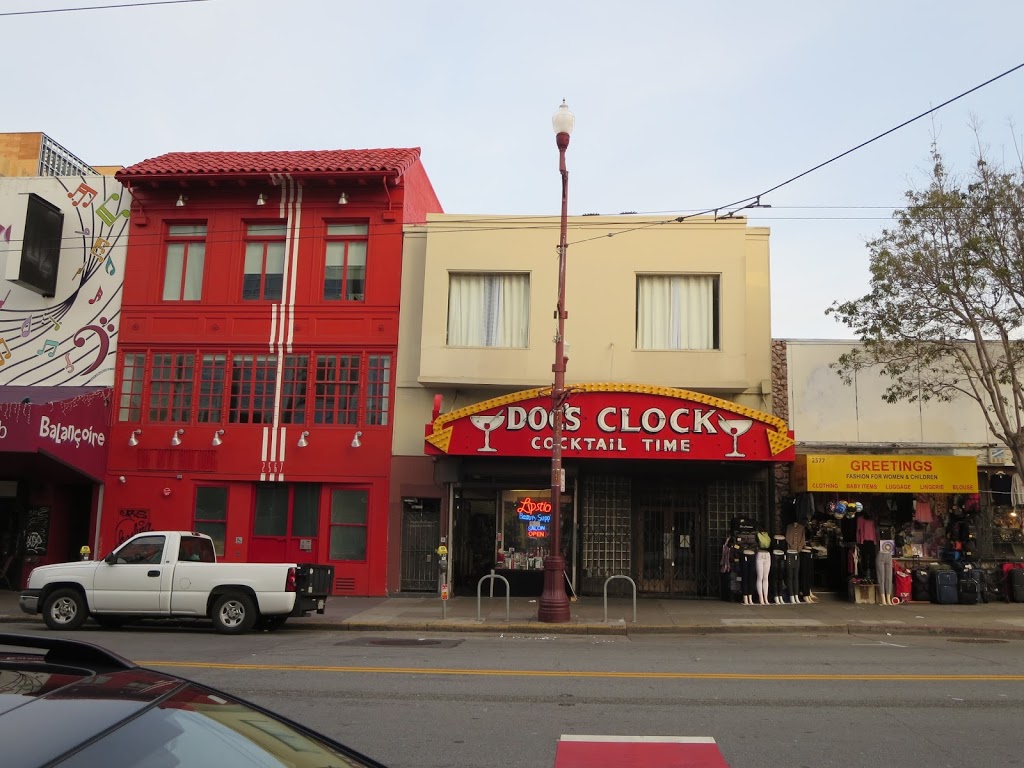



Wednesday, December 28
Chocolate Tour
I started the day with a bagel at Working Girls’ Cafe, just a couple of blocks from the hotel. Then I had a Gourmet Chocolate Tour scheduled. The variety in types and styles of chocolate was impressive, and I learned a lot about how chocolate is made and different approaches to producing chocolate, from the bean-to-bar purists who sell products whose only ingredients are cacao and sugar, to highly processed chocolates with ingredients like emulsifiers that provide smooth mouth feel and enhanced flavor. The one thing they all had in common is they were all wonderful in their own way.
I don’t have pictures of all the stops, but here are a few highlights.
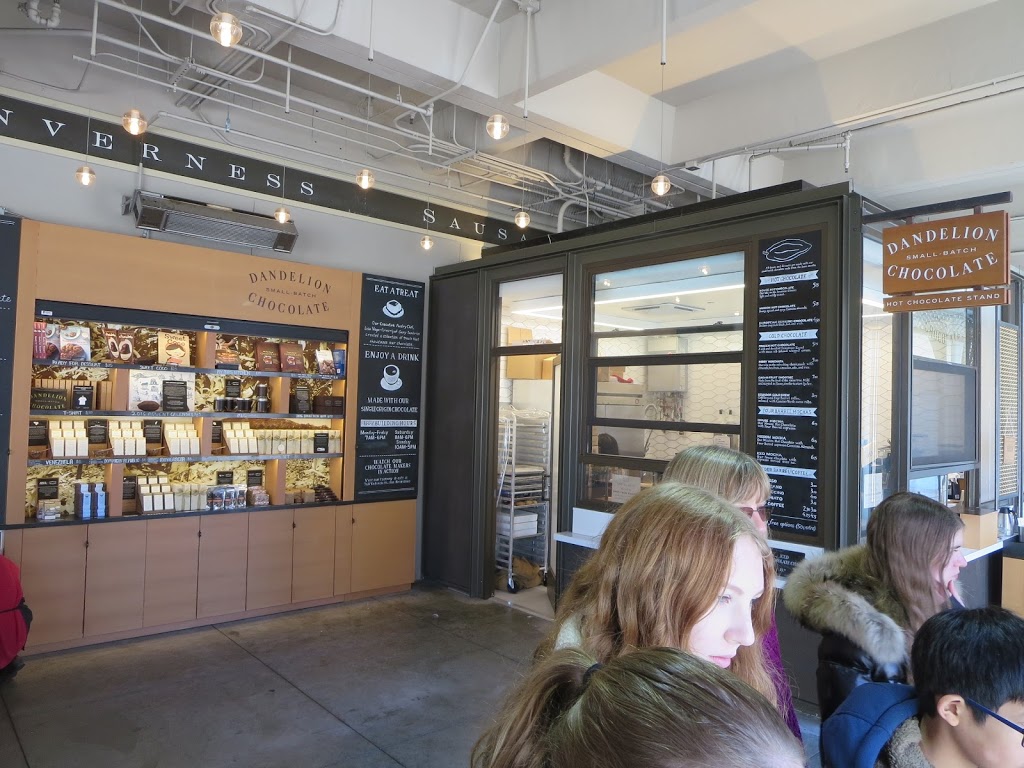
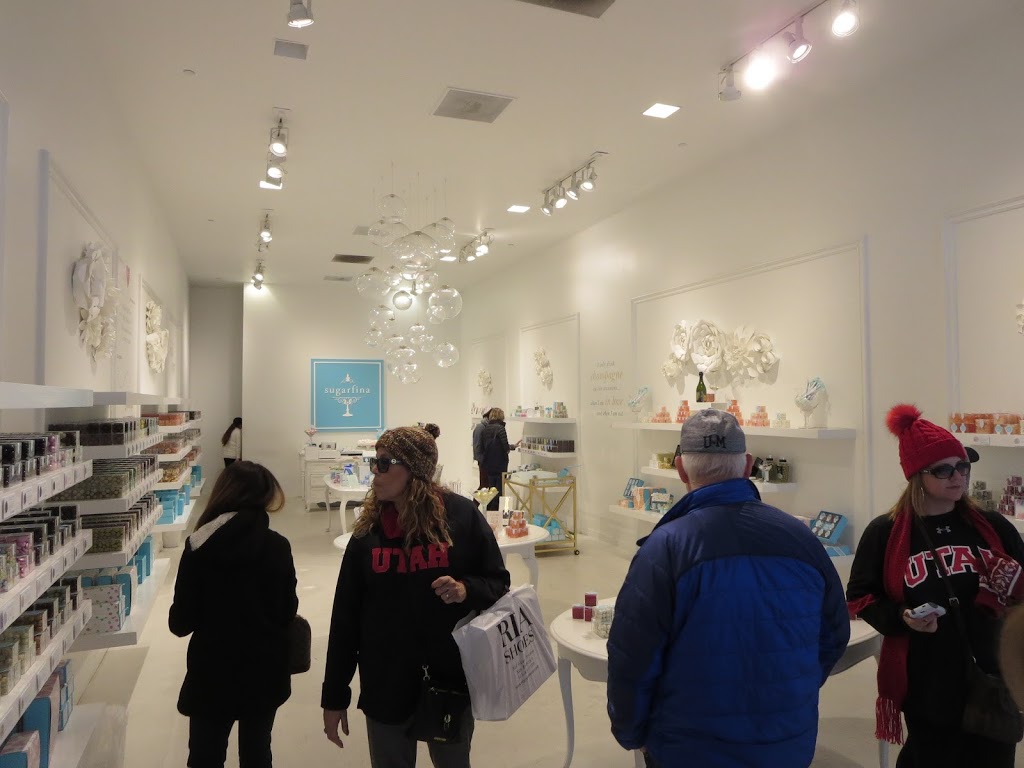
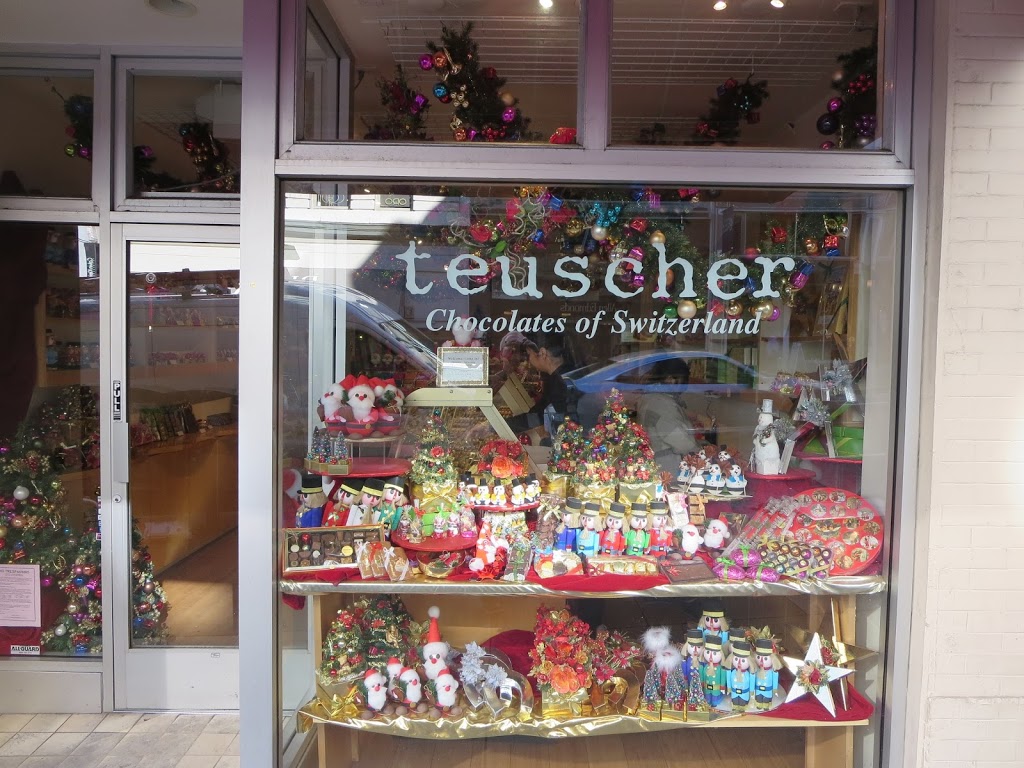

We finished the tour around 2pm, and I wasn’t the least bit hungry for lunch! In fact, I ended up saving a lot of the samples for later. So I made my way up to Nob Hill to catch a walking tour from City Guides of that neighborhood. We had a very large crowd (I think there were only ten of us for the Castro tour, but there were probably 50 for this one.)
Nob Hill Walking Tour
Nob Hill was an affluent neighborhood in the city going back to the nineteenth century. Most of building in the area were destroyed by the 1906 earthquake and fire. Here were mansions of some of the wealthiest residents: Leland Stanford (of Stanford University), Charles Crocker, Mark Hopkins, Collis P. Huntington, James G. Fair, and James Flood, the first four of whom are known as “The Big Four,” tycoons involved in the Central Pacific Railroad.

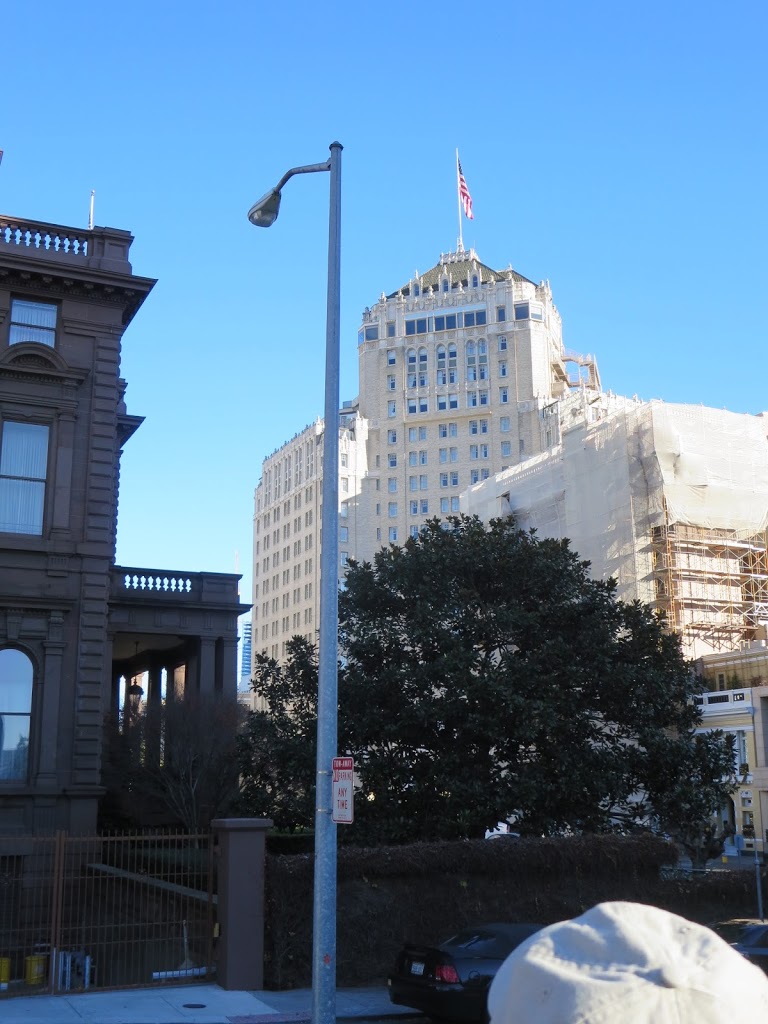

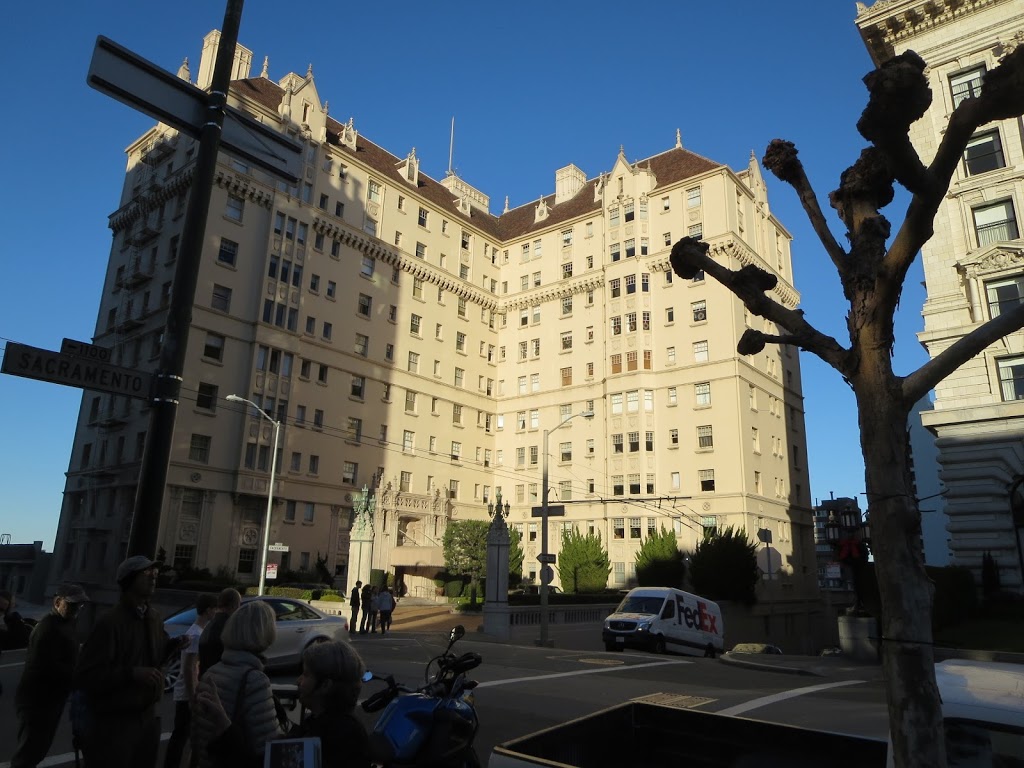
Grace Cathedral
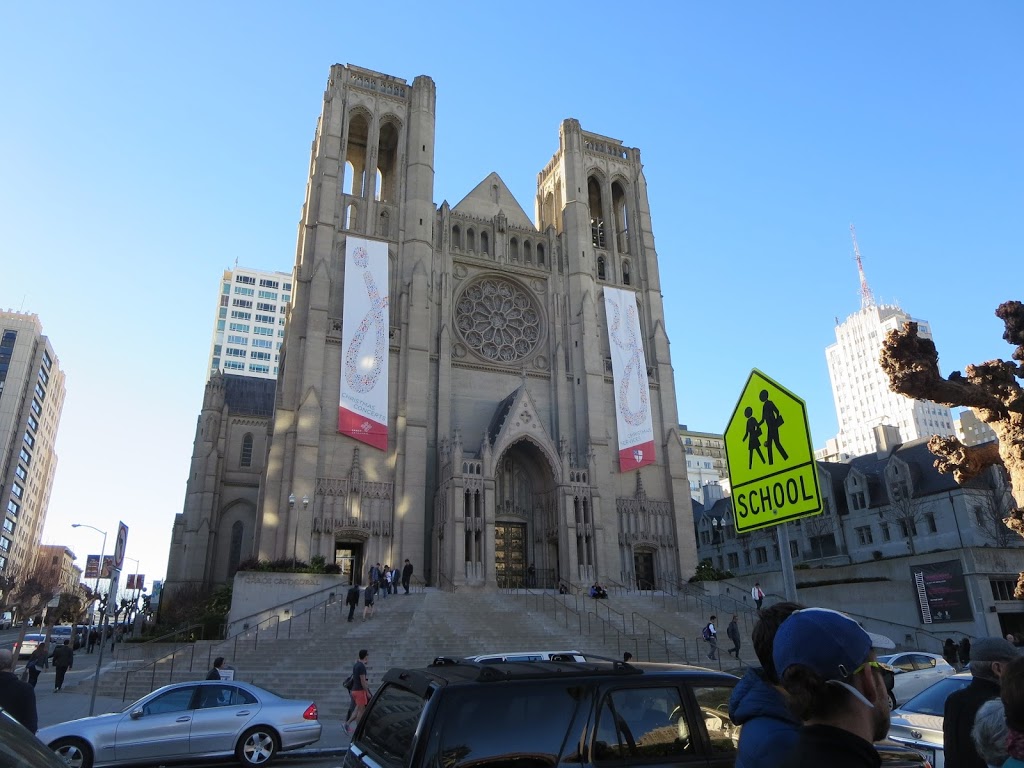
On the tour we also went inside Grace Cathedral. The stained glass was especially beautiful and varied. Included are windows depicting Albert Einstein and John Glenn.

Cable car
After the tour, I hopped on the cable car and rode down California Street back to the Embarcadero. I say “hopped,” but I had to wait somewhere around twenty minutes til the cable car actually showed up. The nice thing about the California Street cable car is that it had just a handful of other passengers, unlike the line that runs on Powell Street and has a long line of tourists waiting to ride between Union Square and Fisherman’s Wharf. By then I was starving… all I’d eaten all day was chocolate. So I went into the Ferry Building and got an amazingly delicious grilled cheese sandwich, which I pretty much inhaled, and I bought some pancetta and some bread to make sandwiches for a snack later. And then that evening I played my second bridge game with Sari.
Thursday, December 29
My only scheduled activity on Thursday was an Urban Jungles hike, sponsored by Urban Hiker, in the afternoon. So I decided to visit City Hall in the morning on my way there. I went to the Muni stop and got down the the platform to wait for a train, and they announced that there was a problem of some kind and no trains were running for the time being, until they resolved the problem.
So I decided to take a bus or streetcar, and I went back up to the street and caught one of the historic streetcars. These are streetcars that were collected from old streetcar lines all over the world. The one I was riding was from Milan, complete with signs in Italian. It was very charming but very slow, and the tour I was hoping to join made my originally relaxed timeline a bit more frantic.
City Hall
But I got to City Hall on time and I enjoyed the tour. It’s a stunning building. It reminded me of something Rick Steves talks about in many of the more secular countries in Europe: the City Hall or Town Hall was often the grandest monument in cities where government and not the church was seen as the center of life. When I was in Oslo last spring, this was especially true. In any case, the rotunda is so beautiful, it is not surprising that so many couples decide to get married at City Hall; during the tour, we witnessed probably five or six weddings taking place.
San Francisco’s City Hall opened in 1915, replacing the former building, two blocks away, which was (wait for it…) destroyed in the 1906 earthquake and fire. The dome is 19 feet taller than the US Capitol Building.
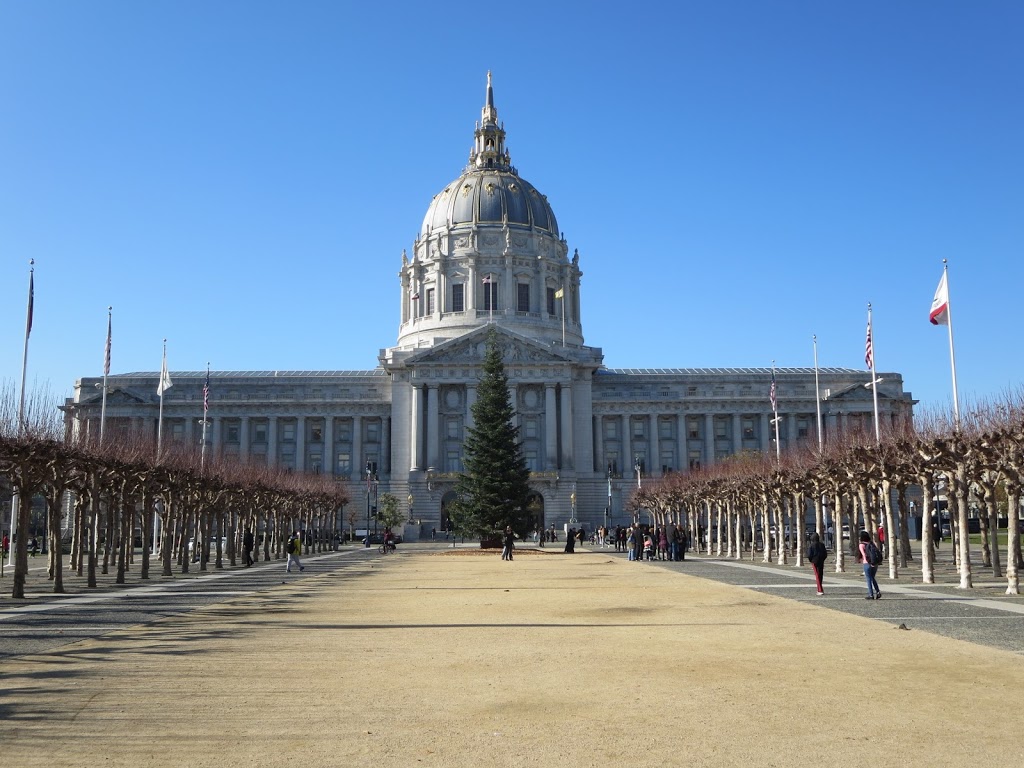
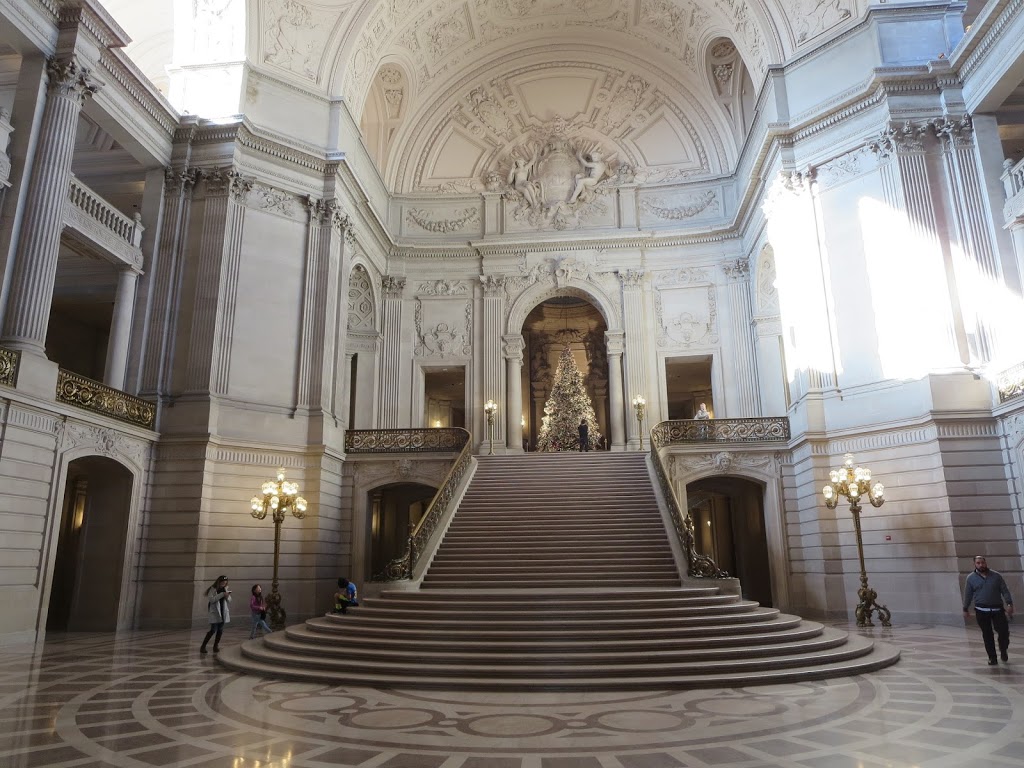


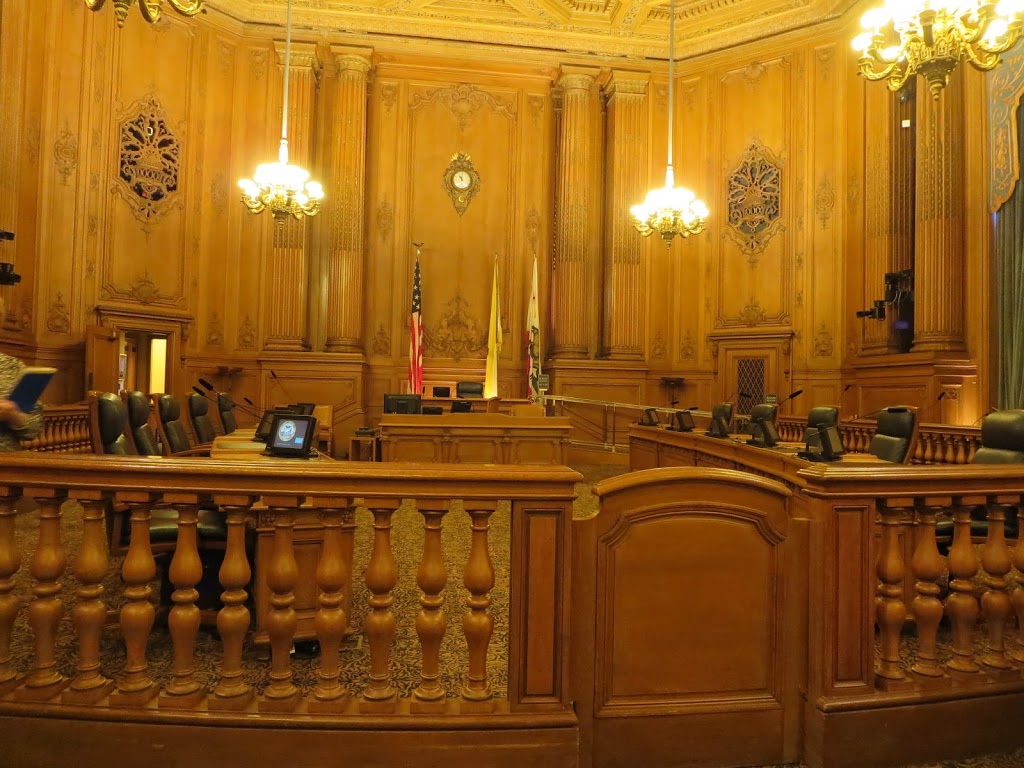
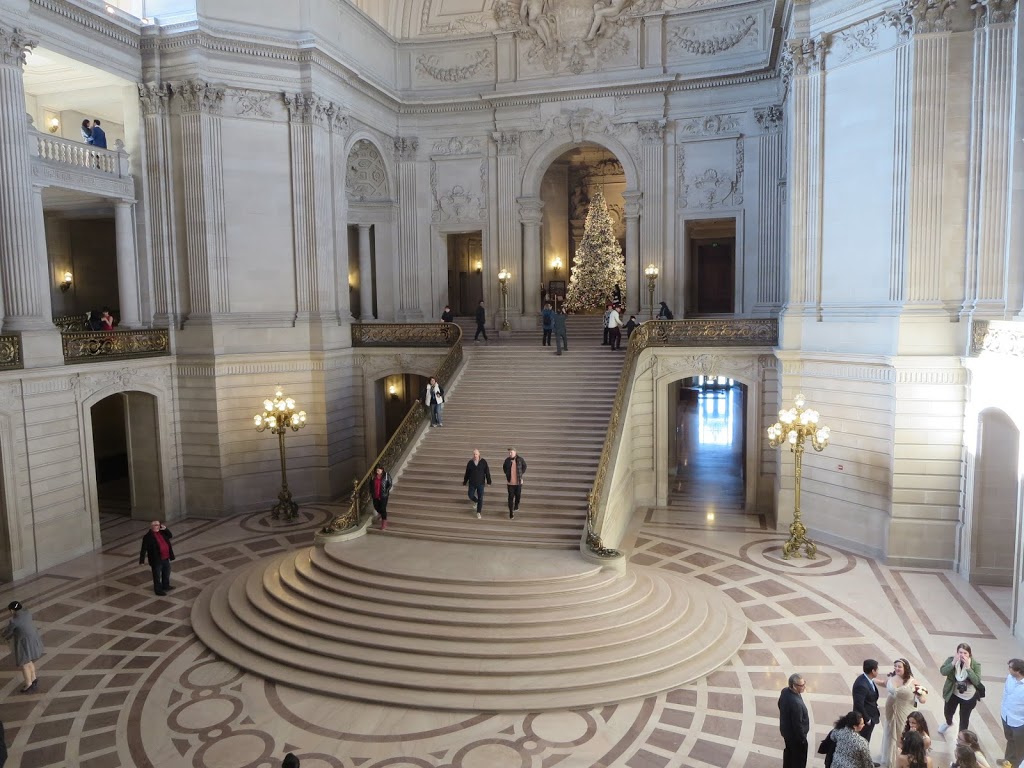
Philz Coffee
Following the City Hall tour, I made my way to the Castro for the start of the Urban Jungles hike. I grabbed lunch at a bagel place and coffee at Philz Coffee. I guess Seattle is just too committed to espresso to welcome a chain like Philz, but I think this is oh so sad. Here’s what they say on their website:
We brew every cup “One Cup at a Time”, crafting a perfect cup to every individual customer’s taste. You won’t find any lattes, cappuccinos, espressos, or pre-brews. Instead, you’ll find over 20 customized blends made from high quality beans from around the world.
When you visit a Philz shop, you’ll be greeted by one of our awesome and knowledgeable baristas excited to help you find the perfect blend! As a full service-coffee bar, we take care of everything from grinding your beans to mixing in your cream and sugar; making our drinks true “cups of love,” as we like to call them. If you don’t have a preference, we recommend you enjoy your first cup “Philz Way”- medium sweet with cream . Here at Philz, our mission is to better people’s days, and we can promise you that any way you have your coffee, we will make it perfect.
Here at Philz, we roast our own coffees at our roasting plant in Oakland, California. We specialize in customized blends that range from two to as many as seven different beans from around the world, all delicately crafted over the last 25 years. We also offer single origin coffees and seasonal blends. Every blend is individually roasted with care and sent immediately to packaging to keep the quality as fresh as possible.
Urban Jungle Hike
There were six of us for the Urban Jungle hike. We did a bit of a tour around the Castro, so there was some duplication from the tour I’d had the day before, but we were soon making our way up to a few of the hills nearby. There was some good uphill climbing, and some great views from Kite Hill, Twin Peaks, and Tank Hill.
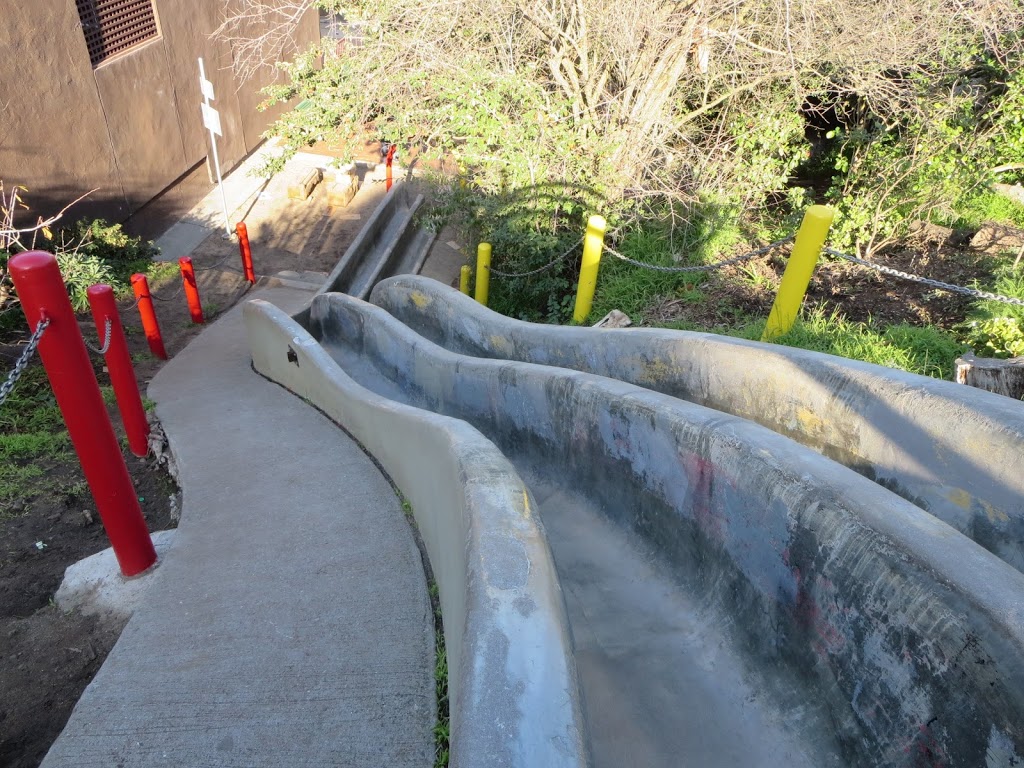
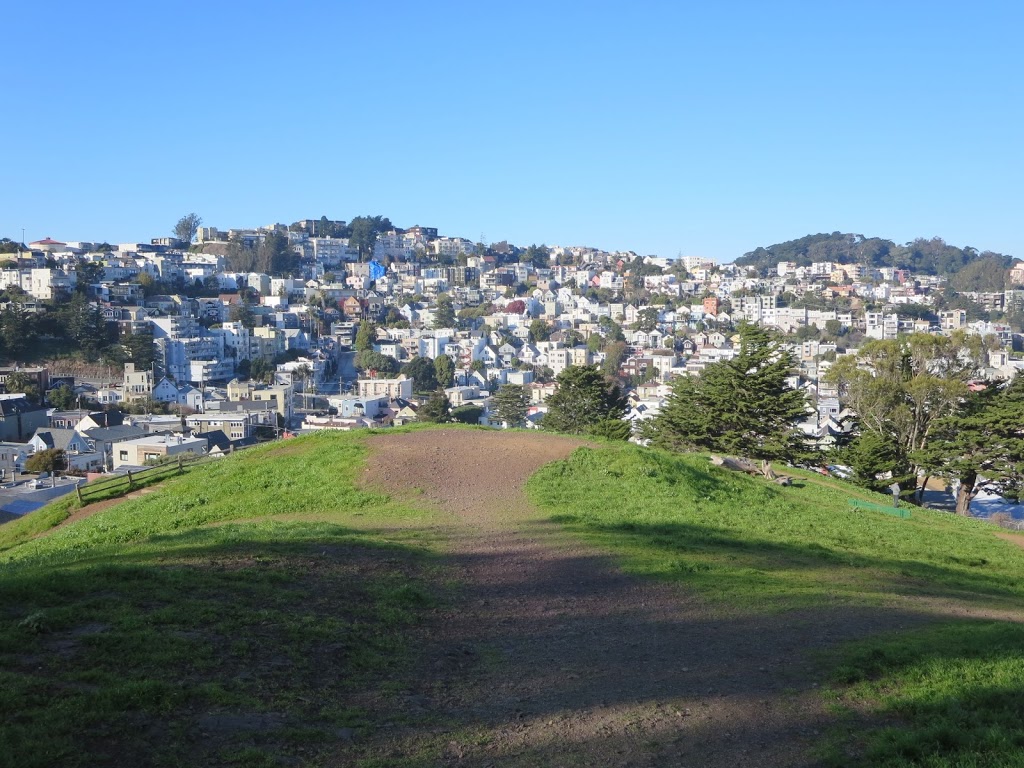
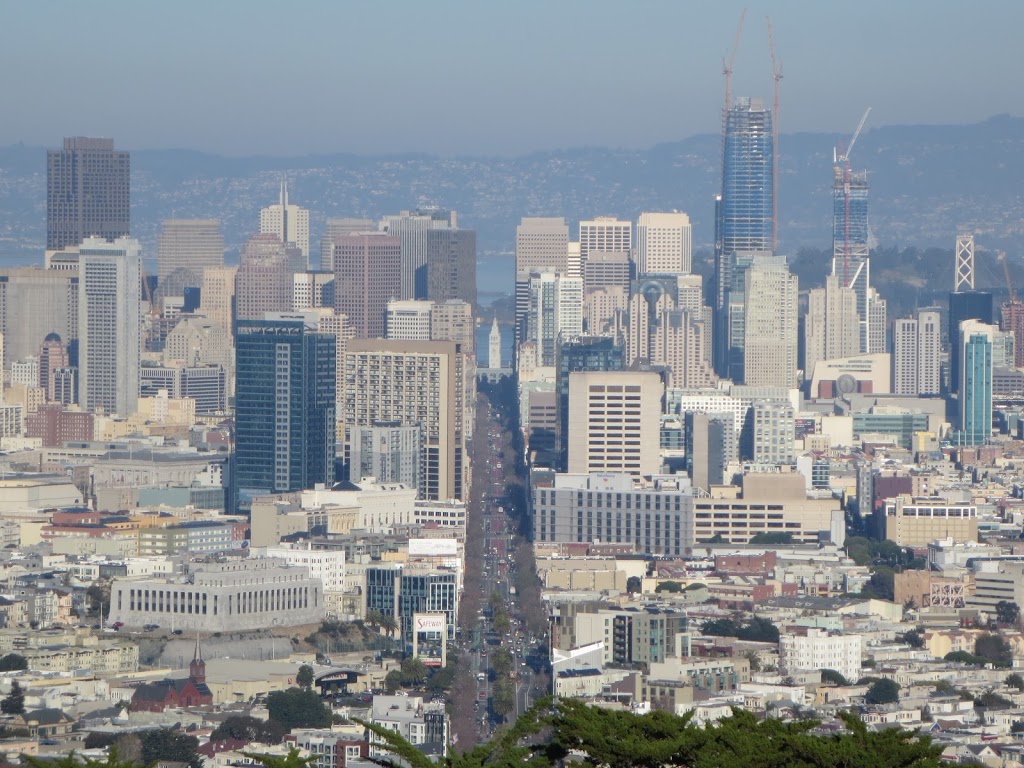
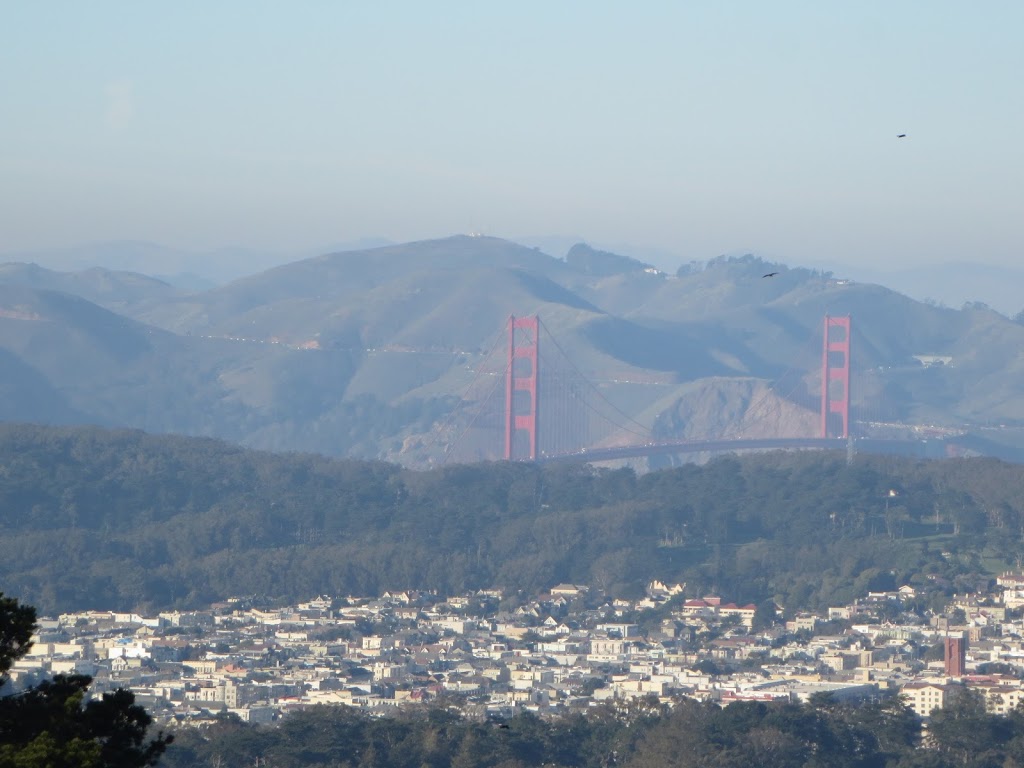

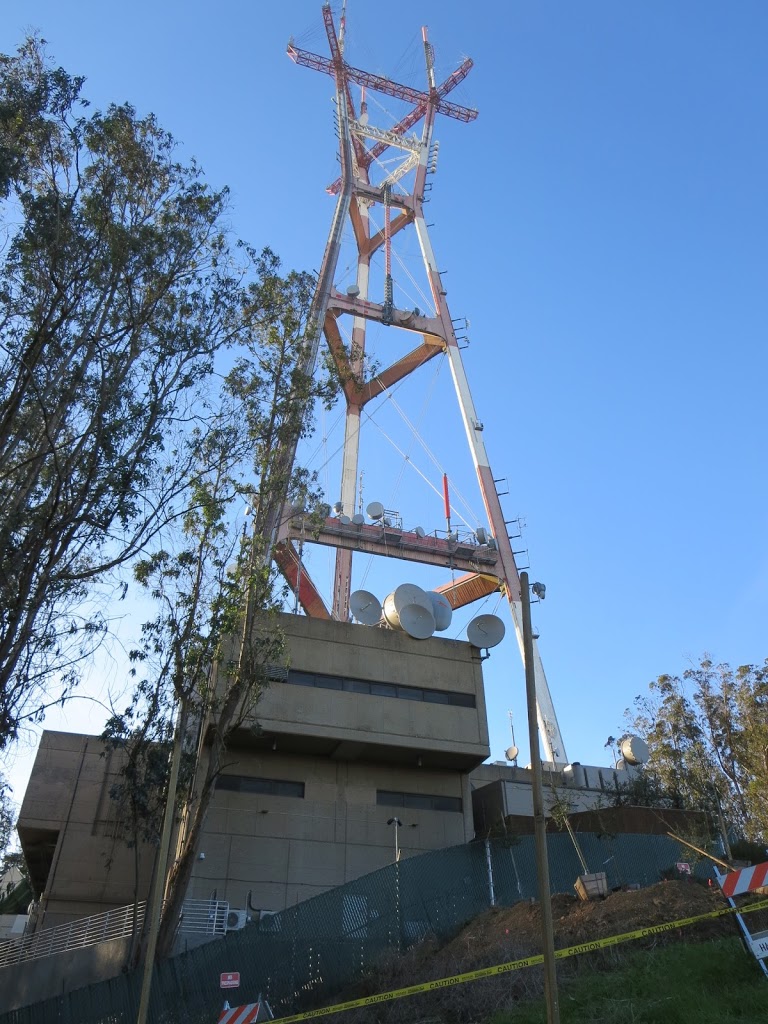
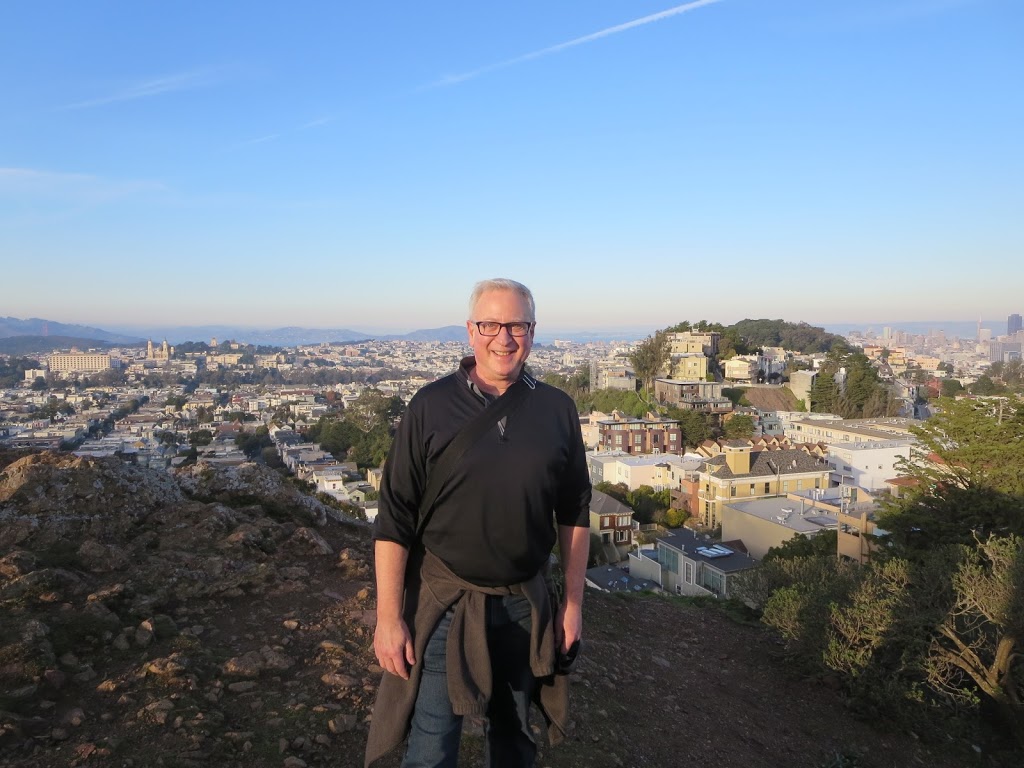
After the hike, I was kind of worn out and ready for an evening to just relax, so I headed back to the hotel and went out to Super Duper Burgers, just a couple of blocks away, for a pretty decent burger as burgers go.
Friday, December 30
Muir Woods
I had arranged a tour to Muir Woods for Friday, and they picked me up at the hotel a little after 8. After a few more stops at other hotels, we headed across the Golden Gate Bridge and got to Muir Woods by about 9:15, allowing us almost two hours to explore.
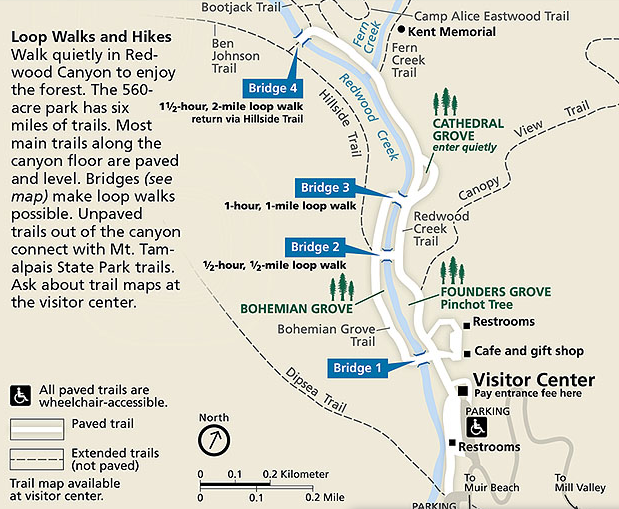
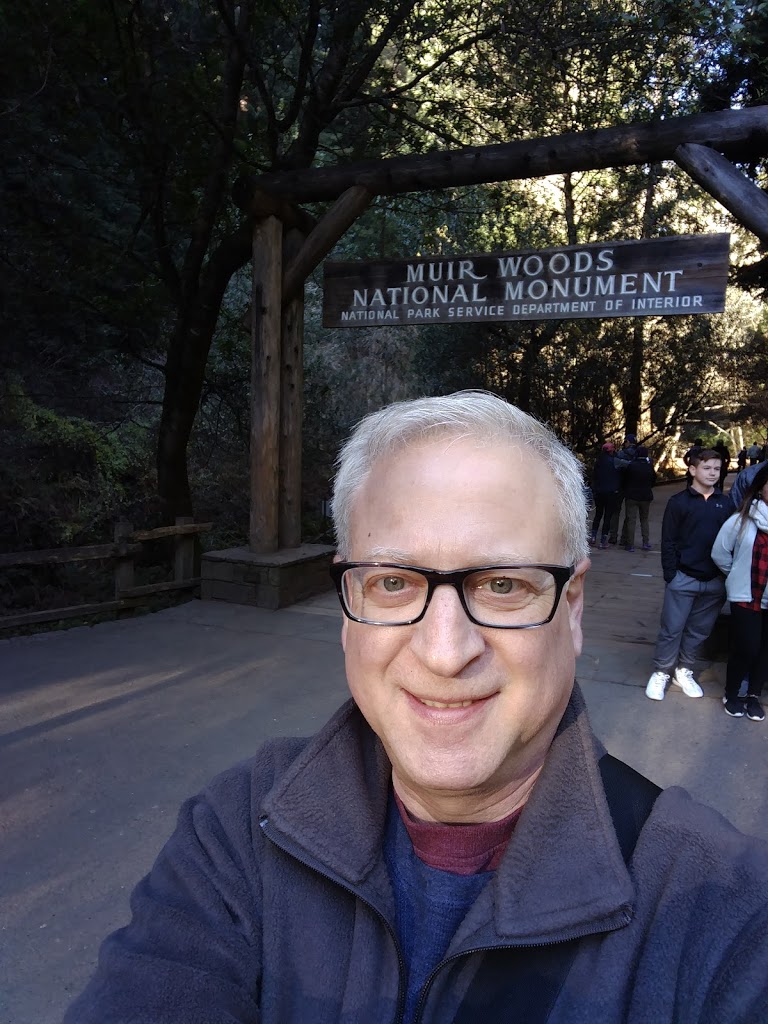
There’s nothing to see there but trees. Beautiful trees! Here’s a sampling; there are a lot more in my Google album.
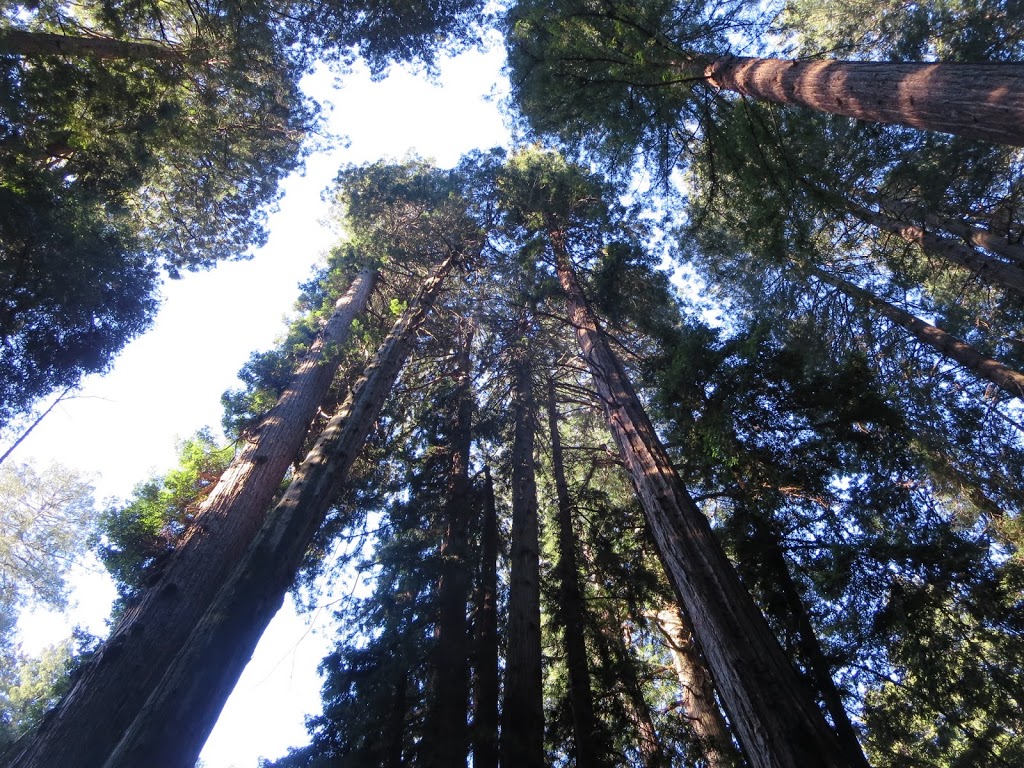
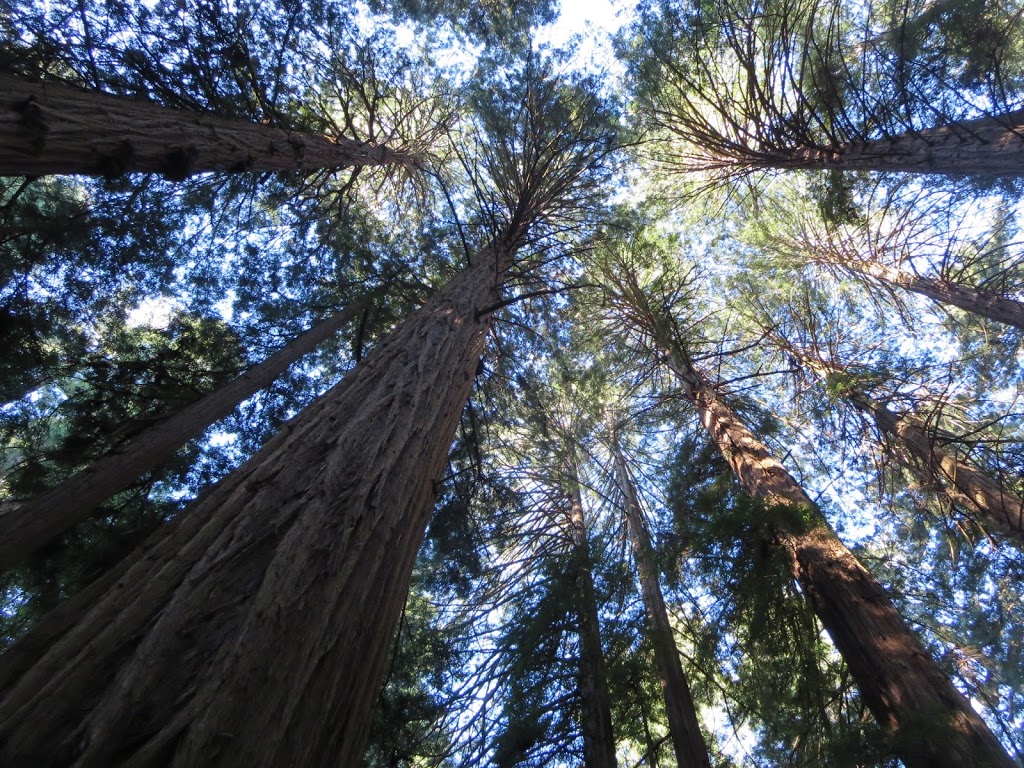

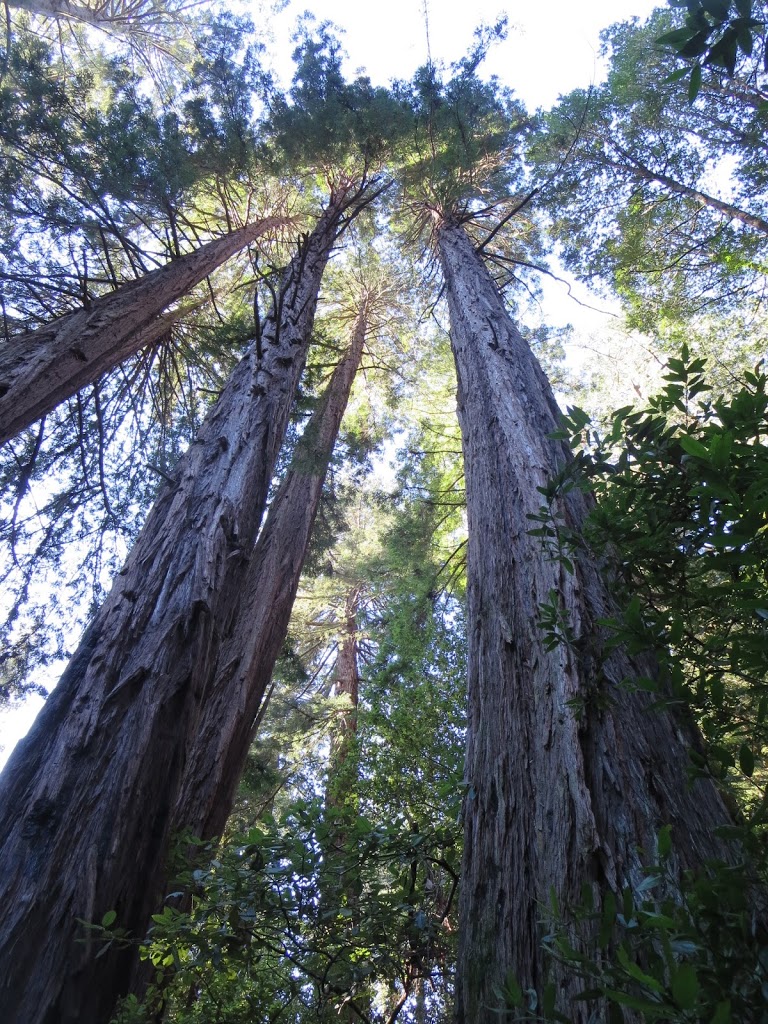
These are not the giant redwoods such as can be seen at Sequoia National Park, but I enjoyed the walk and the trees a lot. It was pretty crowded, though, and as a solo traveler I’m often disappointed at the lack of reverence other travelers give to places that call for it. There are even signs along the walk as you enter the groves requesting quiet, but people were just so chatty throughout. I frequently found myself stopping to wait for others to pass so I could have at least some time to appreciate the solitude before another group came along.
We gathered at the van, and the next stop was Sausalito. Waiting for some of the others to arrive at the van, I got into a conversation with the driver and with some of the other passengers, a group of three from Austin. Somehow the topic came up of the election and the ominous transfer of power that was still a few weeks off, and we were all of the same mind on that, the Texans reminding us that Austin isn’t like much of the rest of Texas.
Sausalito
We had the option in Sausalito to leave the van and get back to the city on the ferry, so I decided to do that. I wandered around the town a bit, and I decided to head to a restaurant called Fish, which I’d read about in one of my guidebooks. It turned out to be a 45-minute walk from the town center, and then it was a half-hour wait in line to order. I got the Dungeness crab sandwich, and it was not that good. So I walked the 45-minute walk back to town and caught the ferry back to San Francisco.
Final Dinner
I decided to have dinner at Perry’s, hoping it would be better than breakfast, and that turned out to be a great final night to my trip. Before dinner I had a few drinks at the bar, and then stayed at the bar and ordered food. I had some really nice conversations with people sitting next to me: first, a loud but very friendly drunk guy who had one drink and then left; next, a young couple on their first couples weekend since having their first baby; and finally a group of six. There were only five seats together, so I offered to move over, and the guy sitting next to me bought me a drink to thank me. And the food was good too!
Saturday, December 31
My flight back to Seattle wasn’t until 5:30, so I had plenty of time before I had to leave for the airport. I asked for late checkout, and they said I could stay til 1:00, which was perfect.
Chinatown Walking Tour
I walked up to Chinatown and got there just in time to join one last City Guides walking tour. It was another huge crowd, among which were the three Austin folks from the Muir Woods tour. I found the tour a little dull compared to the others; we didn’t really see much of anything, except we did get to go inside a Taoist temple and got a good explanation of the various symbols and the way people worship there. It seems like there’s a lot of symbolism and superstition and tokens of good luck. Just like western religions, except Christians and Jews pretend they’re not actually being superstitious when they light a candle or say a prayer.
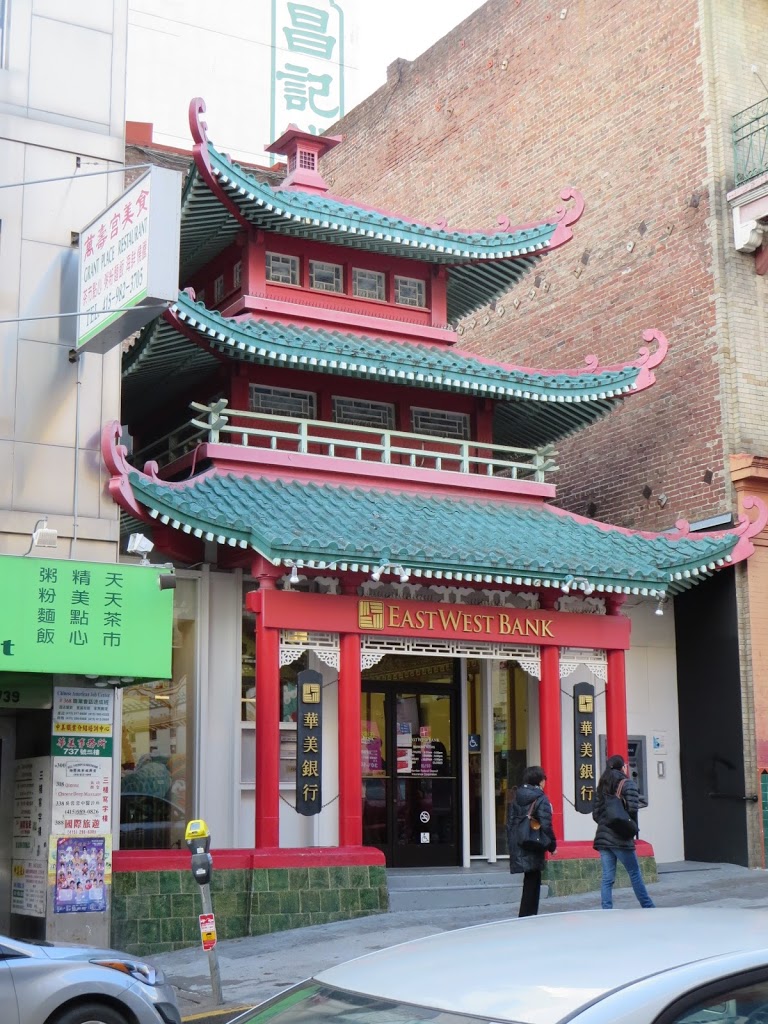

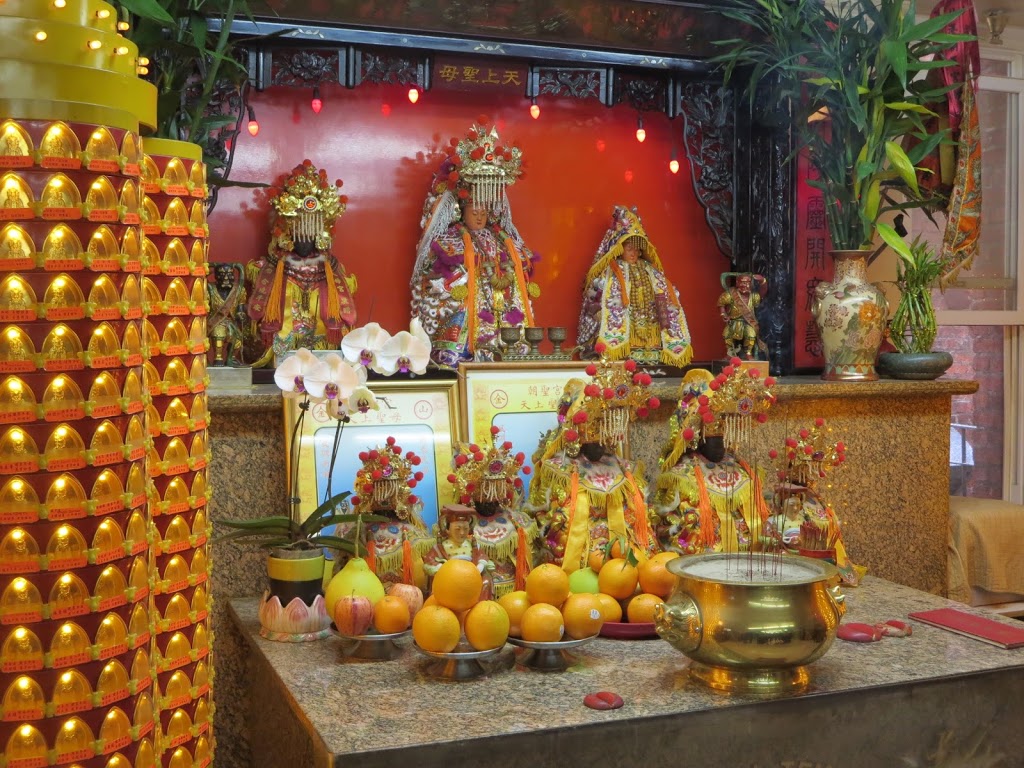
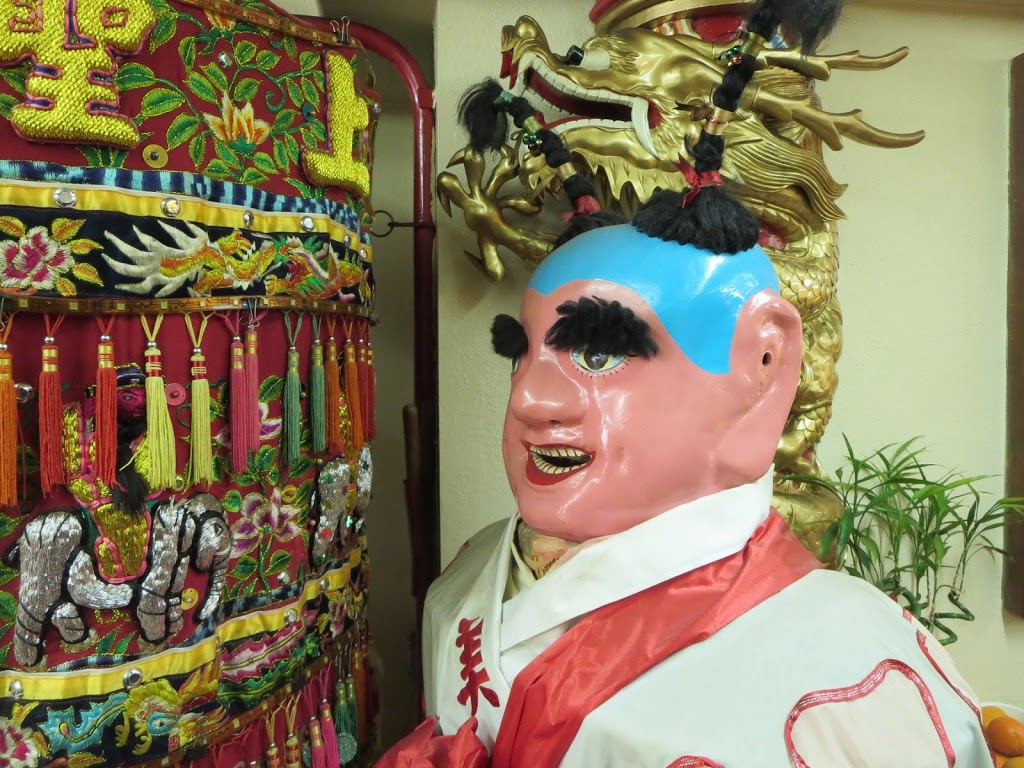
Heading home
After the tour I headed back to the hotel to get my stuff and check out and made may way to the airport with plenty of time for a late lunch before my flight. After I ate, I casually made my way to the gate, and as I got there I saw they were about to close the door on an earlier flight to Seattle. So I asked them if they had any empty seats on that flight, and they gave me a boarding pass and I got home two hours early! Overall, a good trip. But I am amazed that even though I did so much and was on the go all the time, I didn’t end up seeing a lot of the things I had planned to see. No museums, never made it to Golden Gate Park or Coit Tower or the Presidio or Lands End.
It was good, though, to spend a week in one place, since most of my travels are ones where I’m on the go a lot. Like my next trip, which of course is already planned! More about that soon…

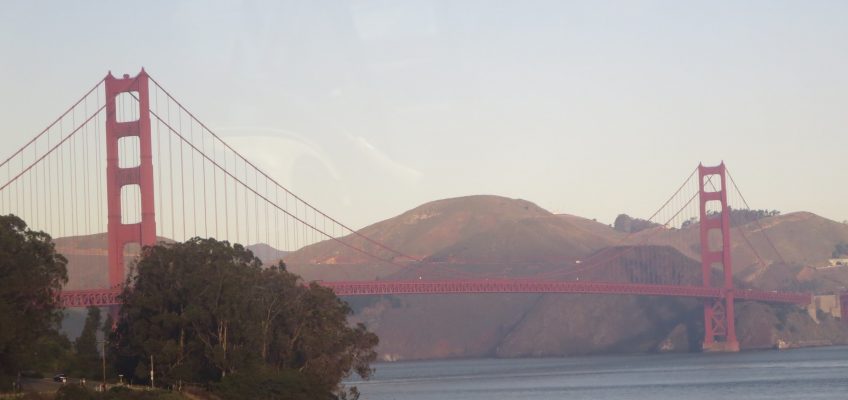
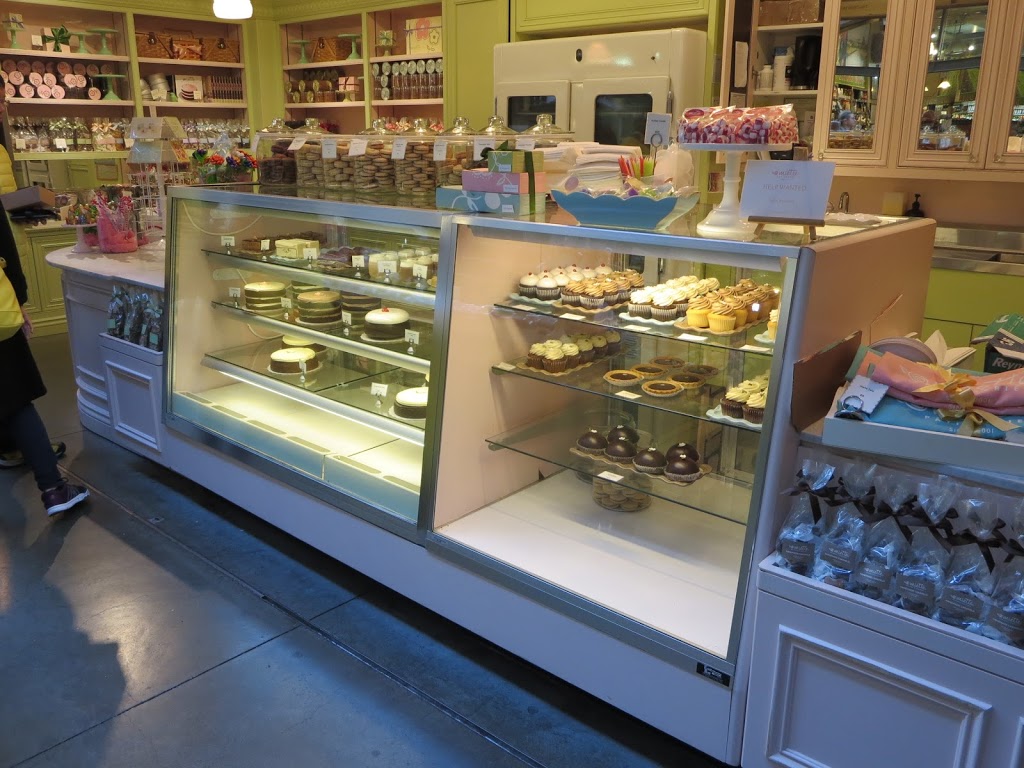
Mary
Wow! You found so much more to see and do in SFO than I ever have! I’m saving this as my Guide to SFO for my next visit, thanks!!